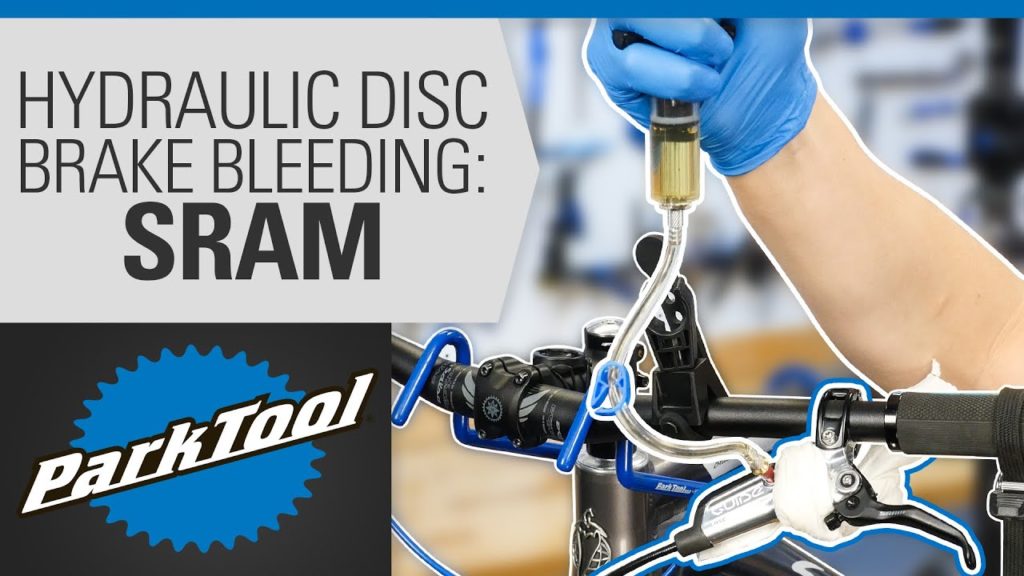Bikes Blog
BRAKE BLEEDING FOR SRAM HYDRAULIC BRAKES USING THE BKD-1
BRAKE BLEEDING FOR SRAM HYDRAULIC BRAKES USING THE BKD-1. October, 2020 / DISC BRAKE SERVICE AND REPAIR. This text will evaluation the bleeding process for SRAM hydraulic brakes whereas utilizing the Park Instrument BKD-1 Bleed Equipment.
PRELIMINARY INFO
WHAT DO I NEED TO KNOW HOW TO DO?WHAT TOOLS DO I NEED?
This bleeding process will work on SRAM drop bar and flat bar brakes that don’t characteristic Bleeding Edge. See this text for the Bleeding Edge process.
Brake bleeding is taken into account a complicated service process, and requires an intensive technical information of the braking system. If unsure, or if this process will not be working, contact the brake producer for model-specific data.
You will need to all the time use the suitable brake fluid for the brake being serviced. By no means use mineral oil in brakes designed for DOT brake fluid, or vice versa. By no means share bleed kits between DOT fluid and mineral oil programs. Mixing fluids may cause harm to elements and result in brake failure, which is harmful.
DOT fluid is corrosive, and it could possibly irritate the pores and skin and eyes, and harm paint and different finishes – so you will need to take care. Put on gloves and eye safety throughout this process. Have loads of rags useful for wiping up spills as fast as attainable. Isopropyl alchohol is an effective cleaner to assist clear and neutralize the DOT fluid, if spilled. You could wish to additionally cowl your work space to keep away from getting fluid on the ground.Eliminate any spent fluid in accordance together with your native waste disposal authorities2
BICYCLE PREP
- Set up the bike in a restore stand if accessible.
- Start by prepping the lever.
- In case your flat bar lever is provided with a contact adjuster, flip it reverse the arrow till it stops.
- Measure the quantity of attain from the centerline of the handlebar to the tip of the brake lever. To bleed it must be between 75mm and 80mm. if not, make be aware of your present adjustment after which regulate to between 75mm and 80mm. On some fashions, this can be a tool-free adjustment, whereas different fashions require a hex wrench.
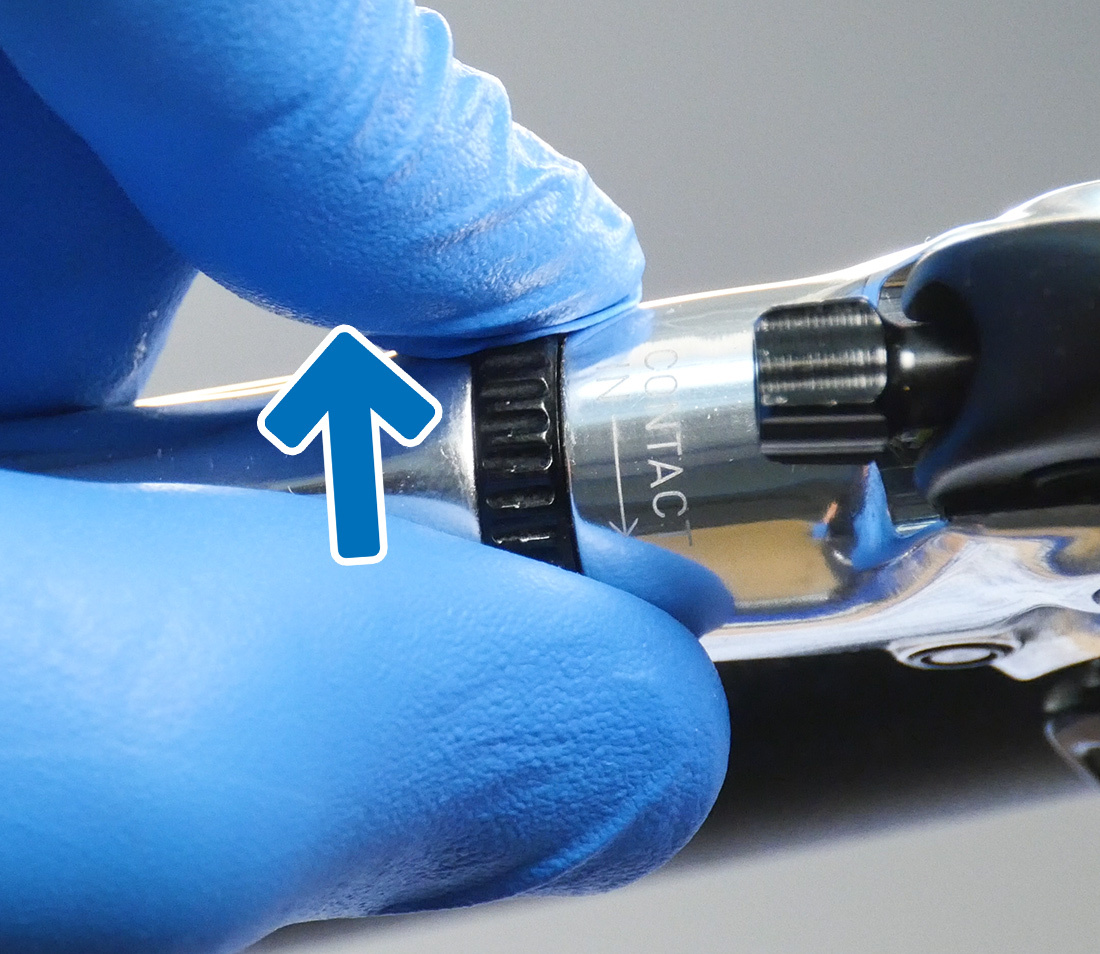
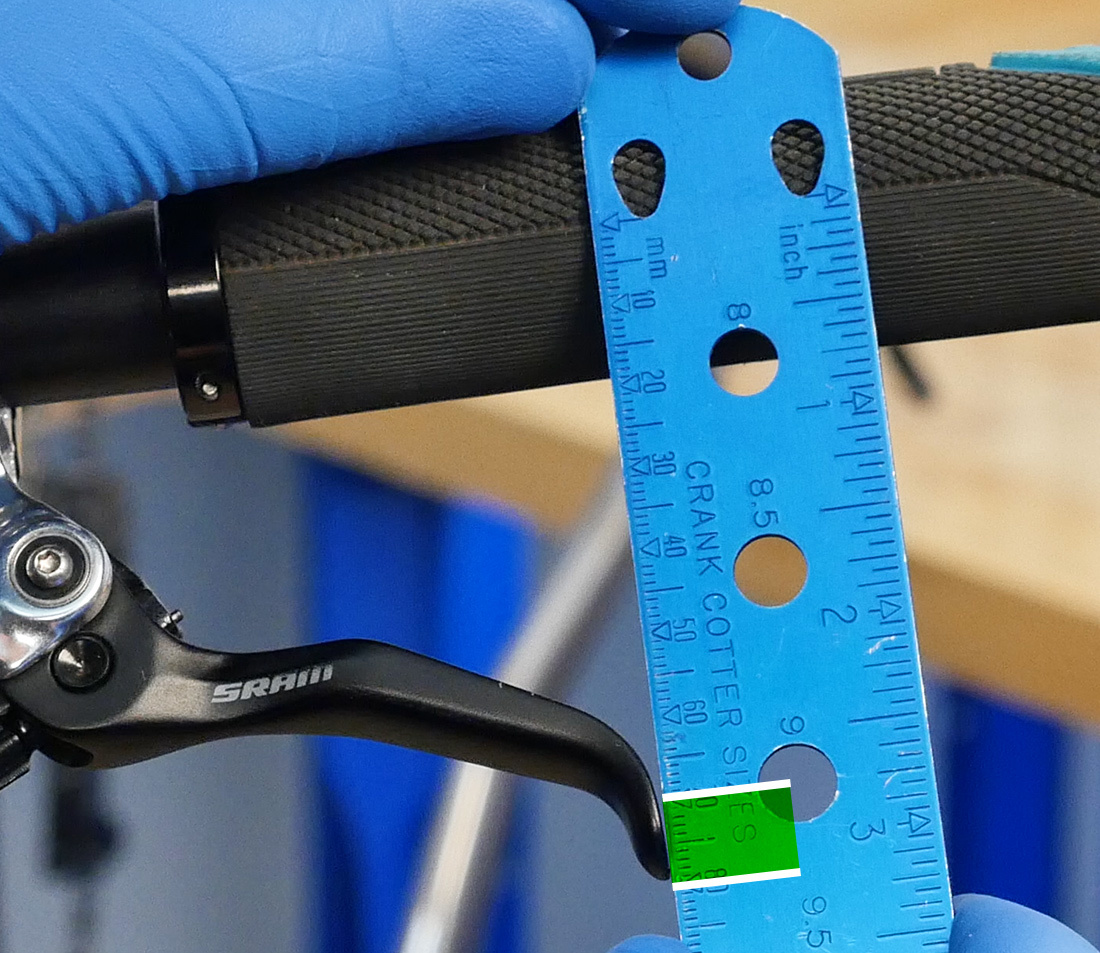
- Tie a rag across the lever to catch any spills.
- Connect the syringe holder to the handlebar.
- Take away the wheel.
- Use a pad spreader such because the PP-1.2 to push the pads again to permit for the bleed blocks as soon as the pads are eliminated.
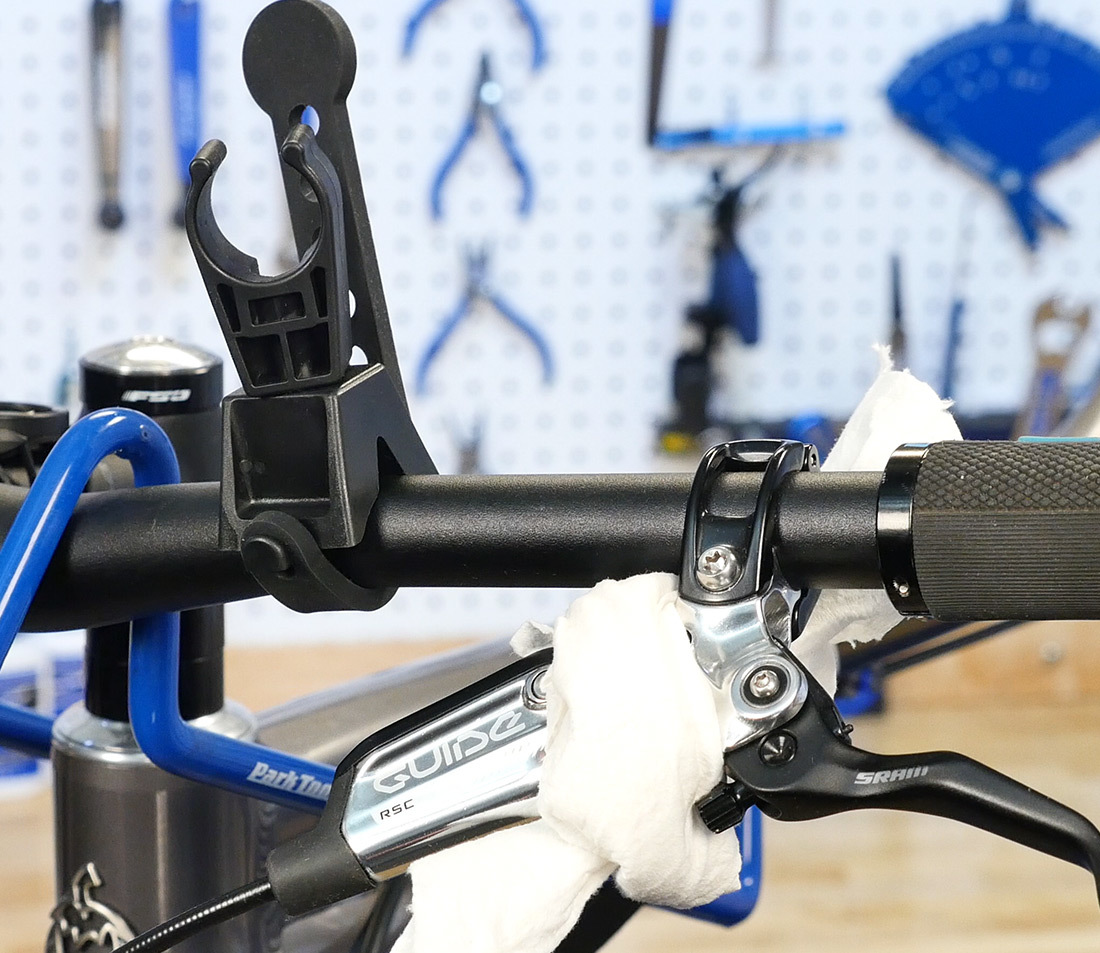
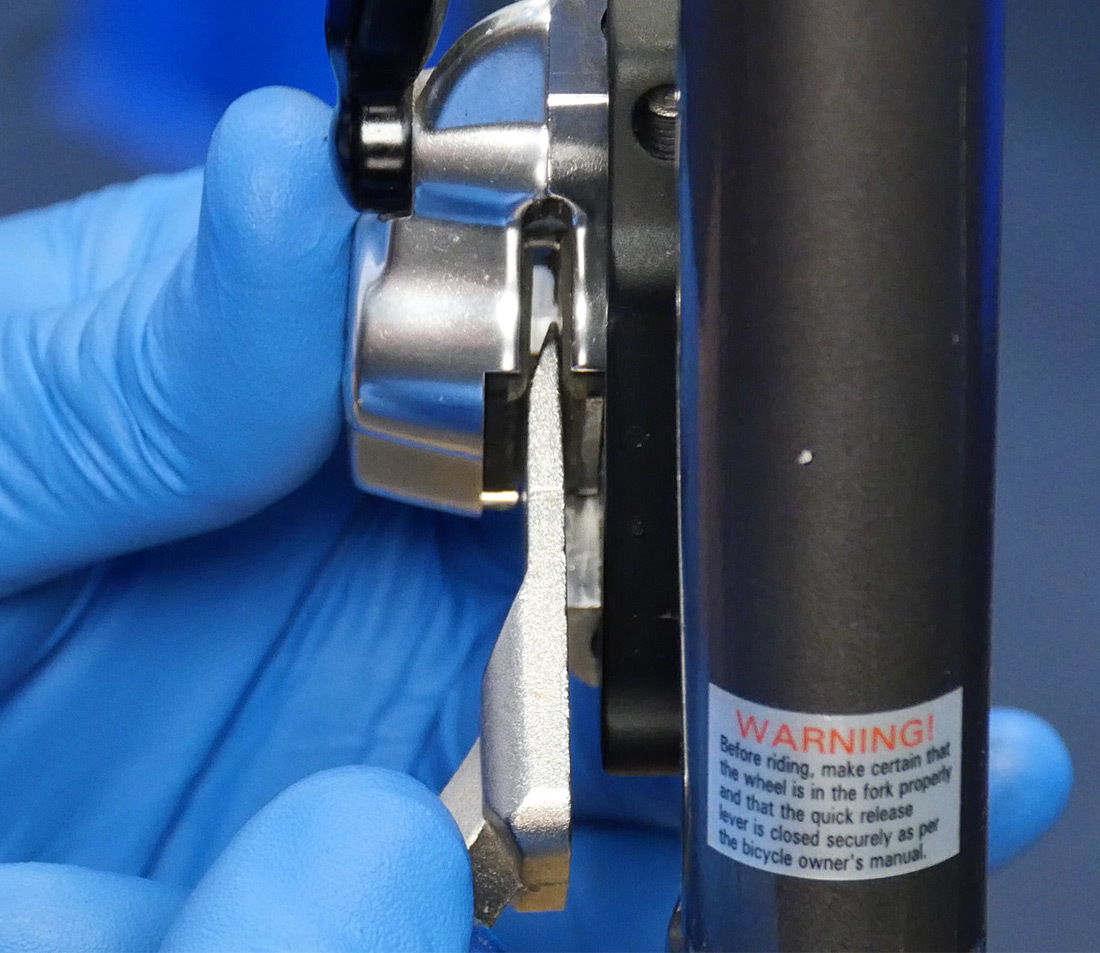
- Angle the bike within the stand in order that the trail of the hose from the caliper to the lever is persistently touring upwards. It may additionally assist to take away the caliper and let it dangle, particularly for rear calipers. This makes the trail for air bubbles as simple as attainable to observe.
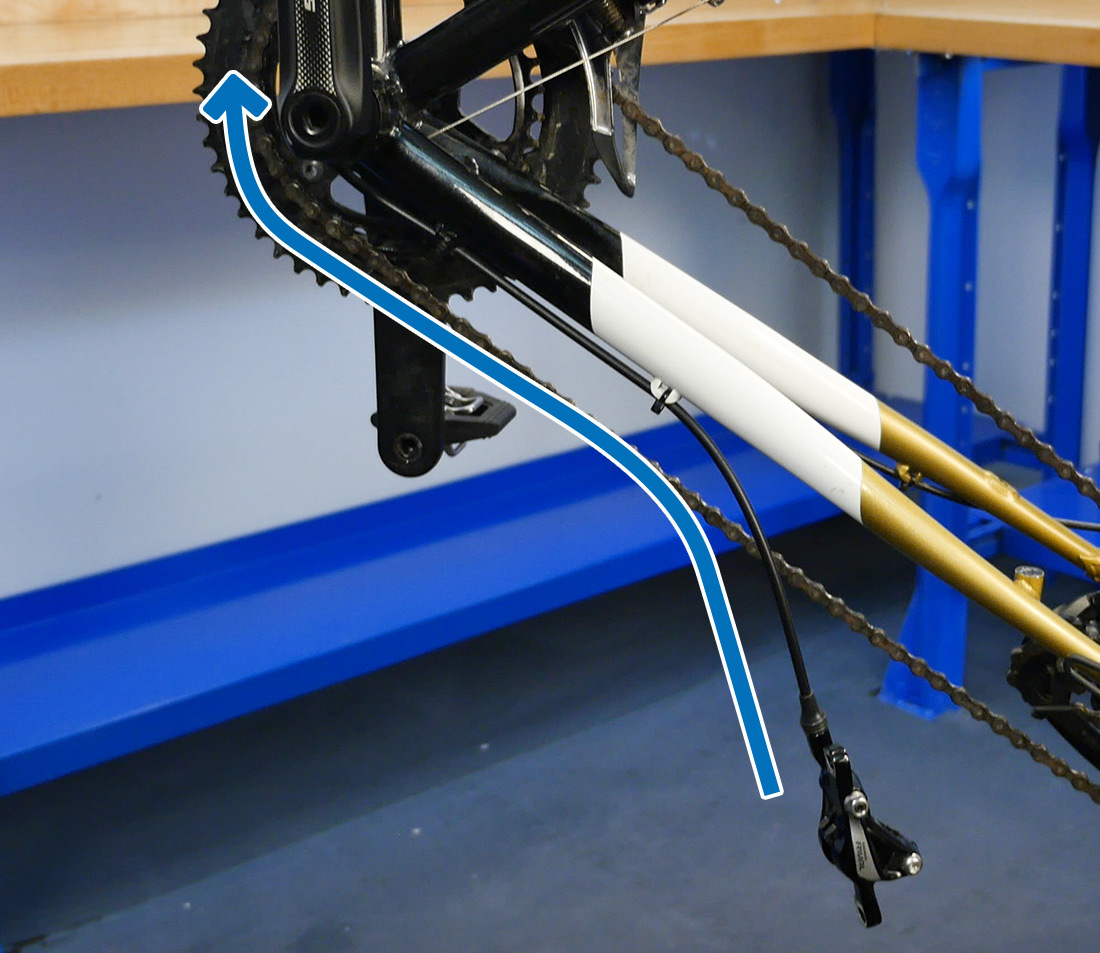
- The pads are eliminated to forestall any contamination.
- Take away the pad pin clip with a needlenose pliers, and unthread the pad pin with a 2.5mm hex wrench.
- For pads with a cut up cotter pin, use a needlenose pliers to straighten the pin, then pull it out.
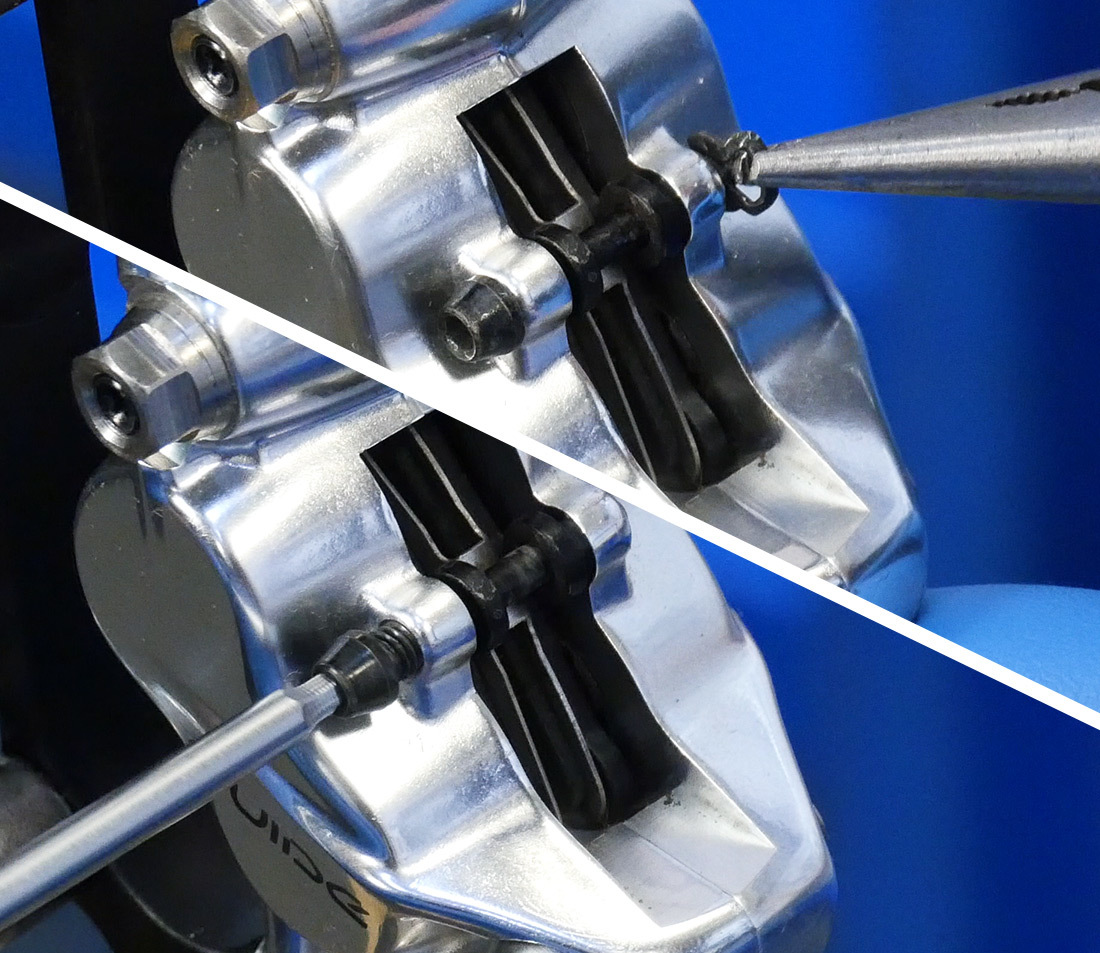
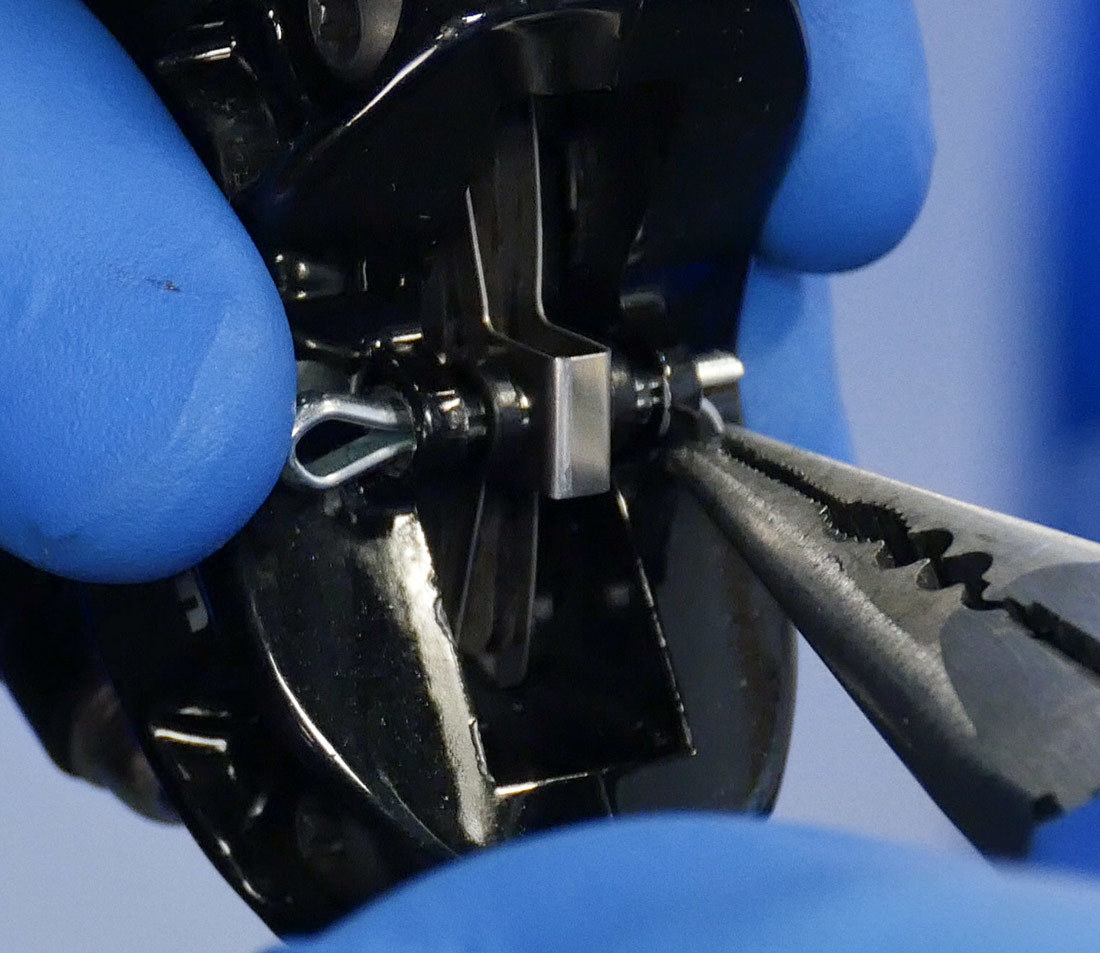
- Pull the pads out. It may assist to push from the underside initially.
- set up the bleed block and safe with both the pad pin, a rubber band or a zipper tie.
- If the caliper has two units of pistons, use each bleed blocks.
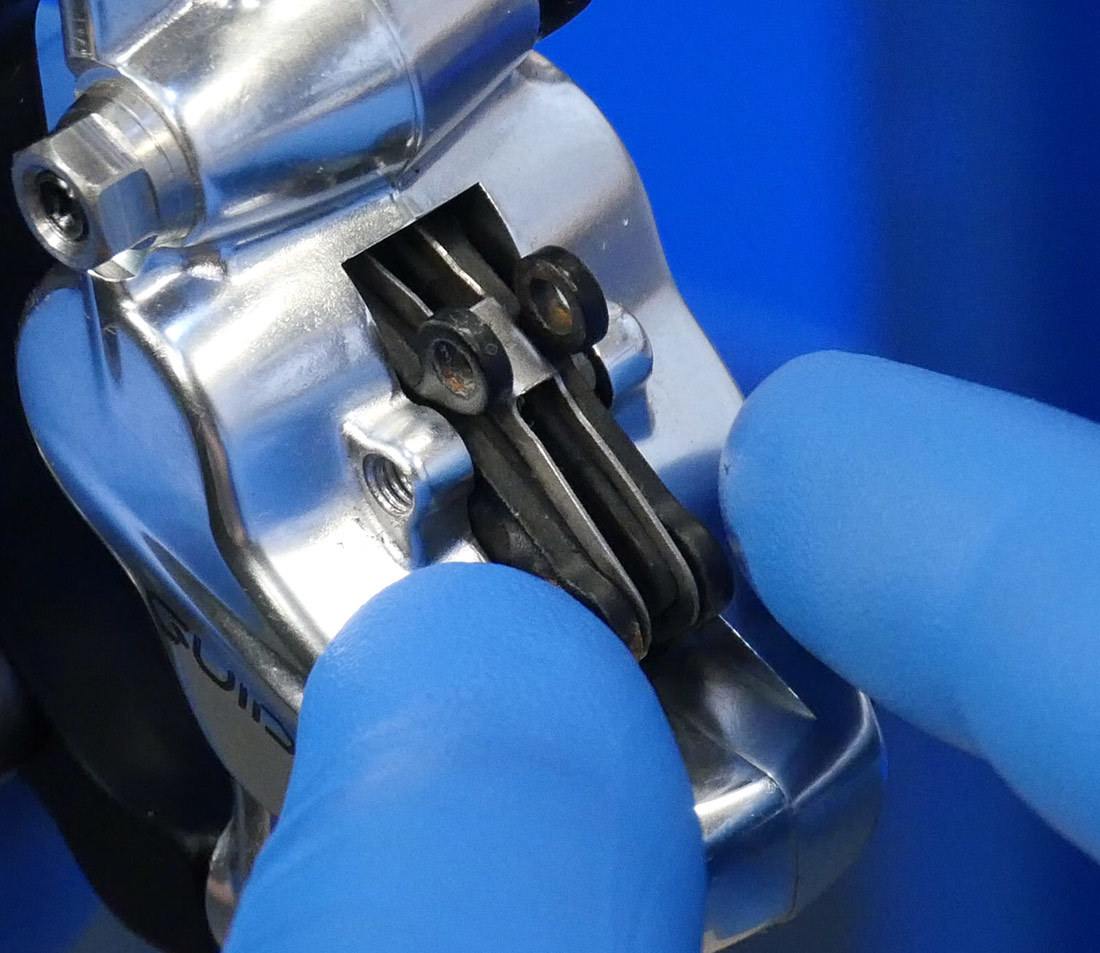
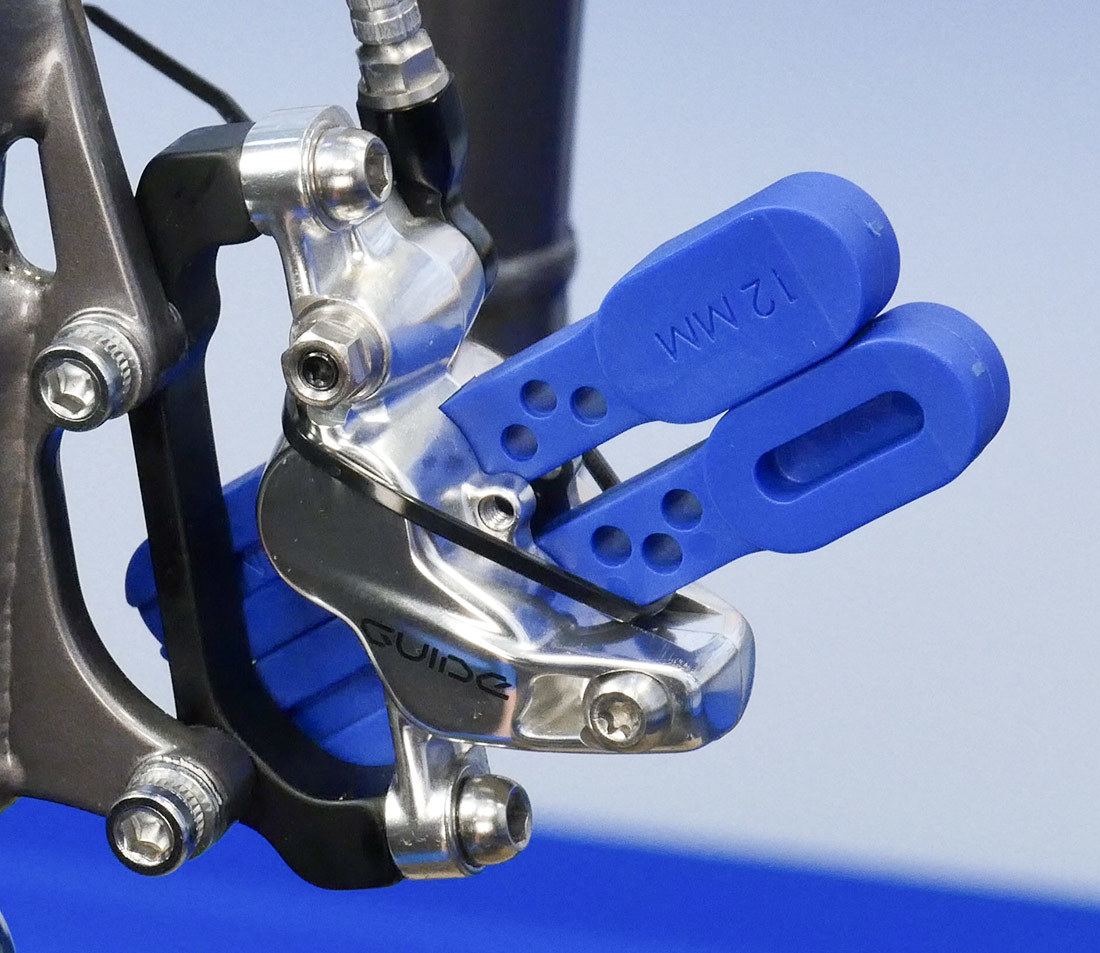
3
BLEED KIT PREP
- Set up the double ended hoses onto the syringes, with the o ring seize away from the syringe.
- Set up the pink adaptor ends (half #2618) onto the syringe hoses.
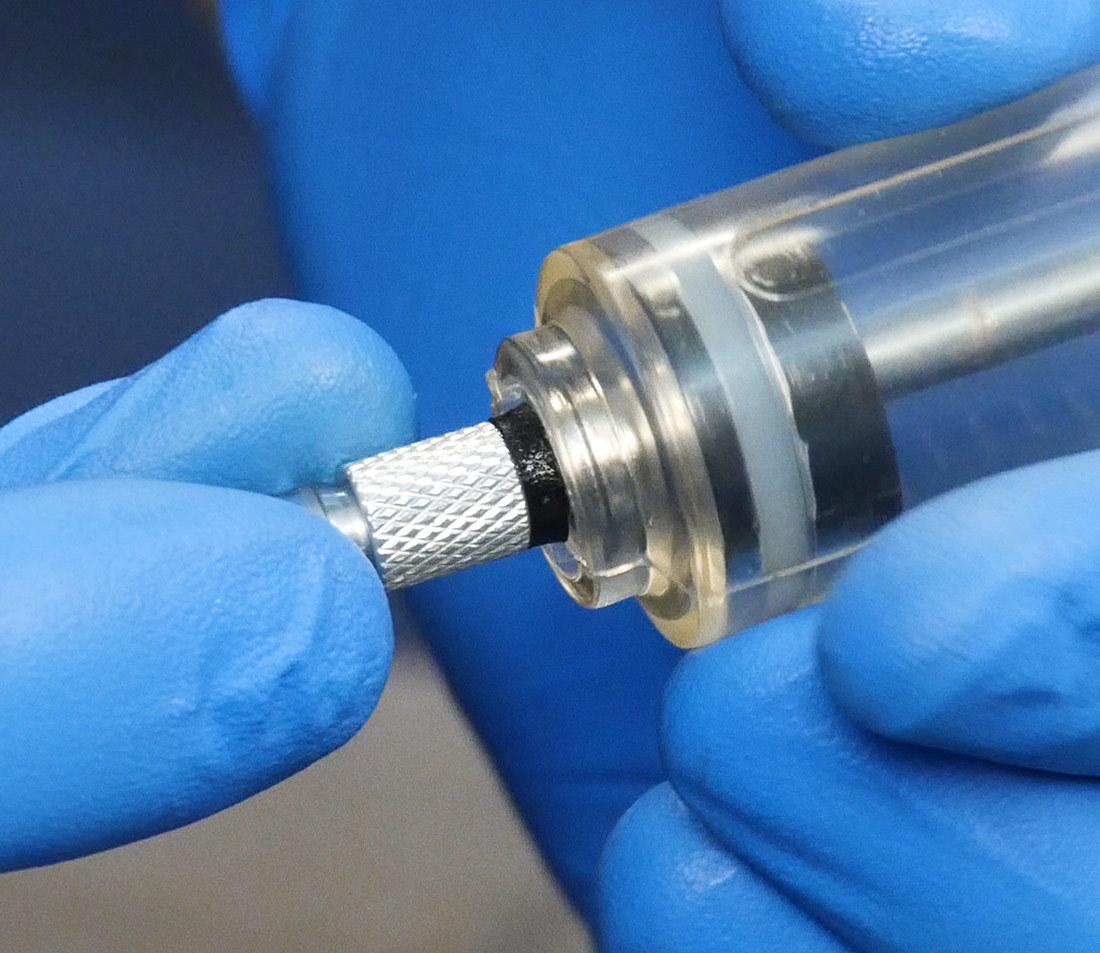
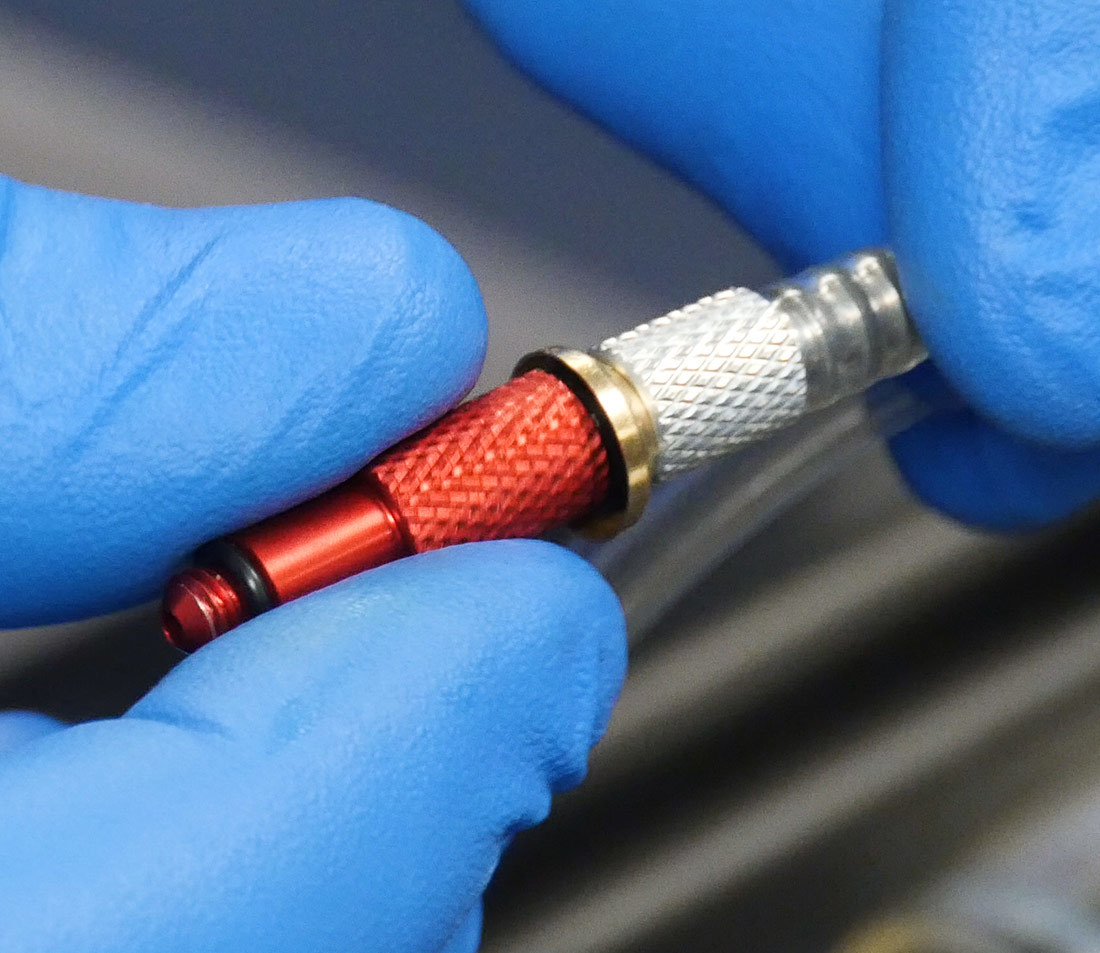
- Fill one syringe 1/4 full. This would be the lever syringe.
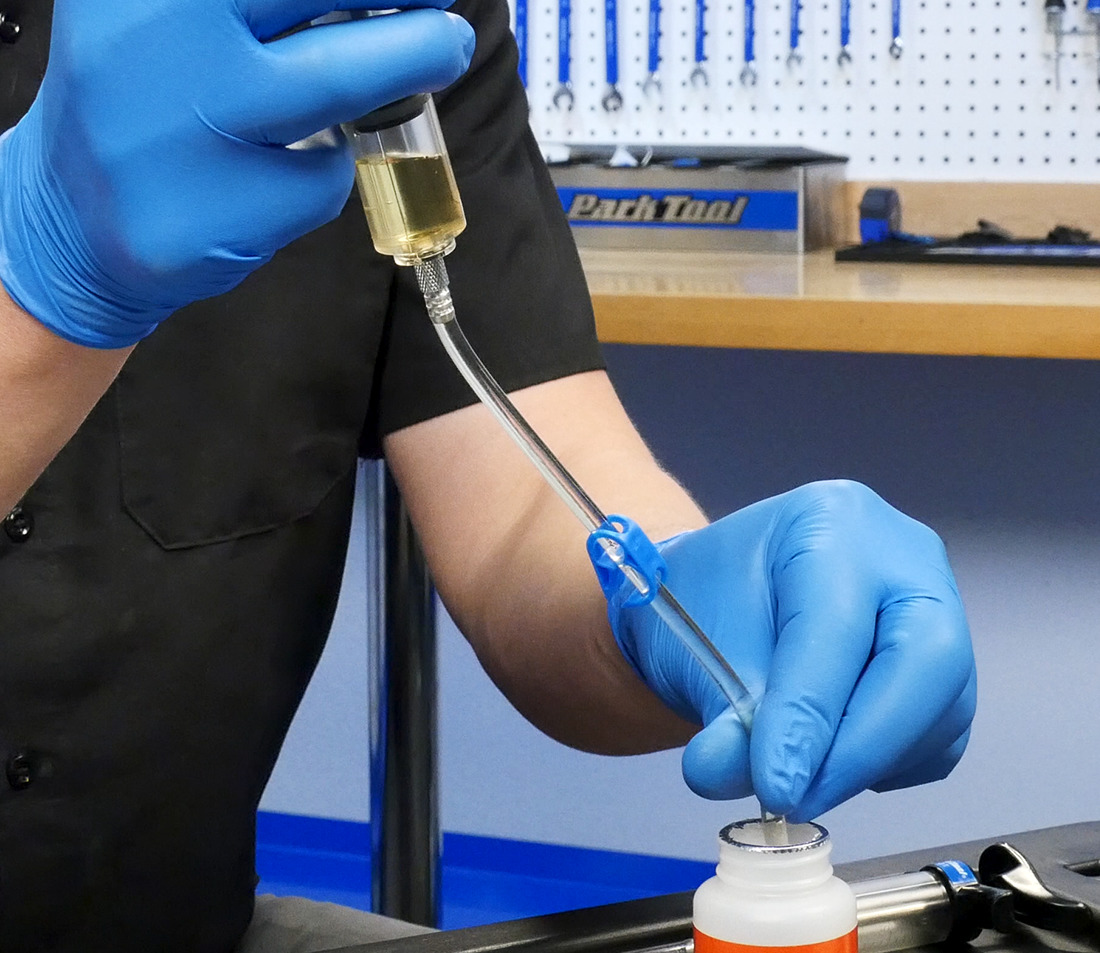
- Maintain the hose find yourself and push the syringe. Remove as a lot air as attainable. Clip the hose.
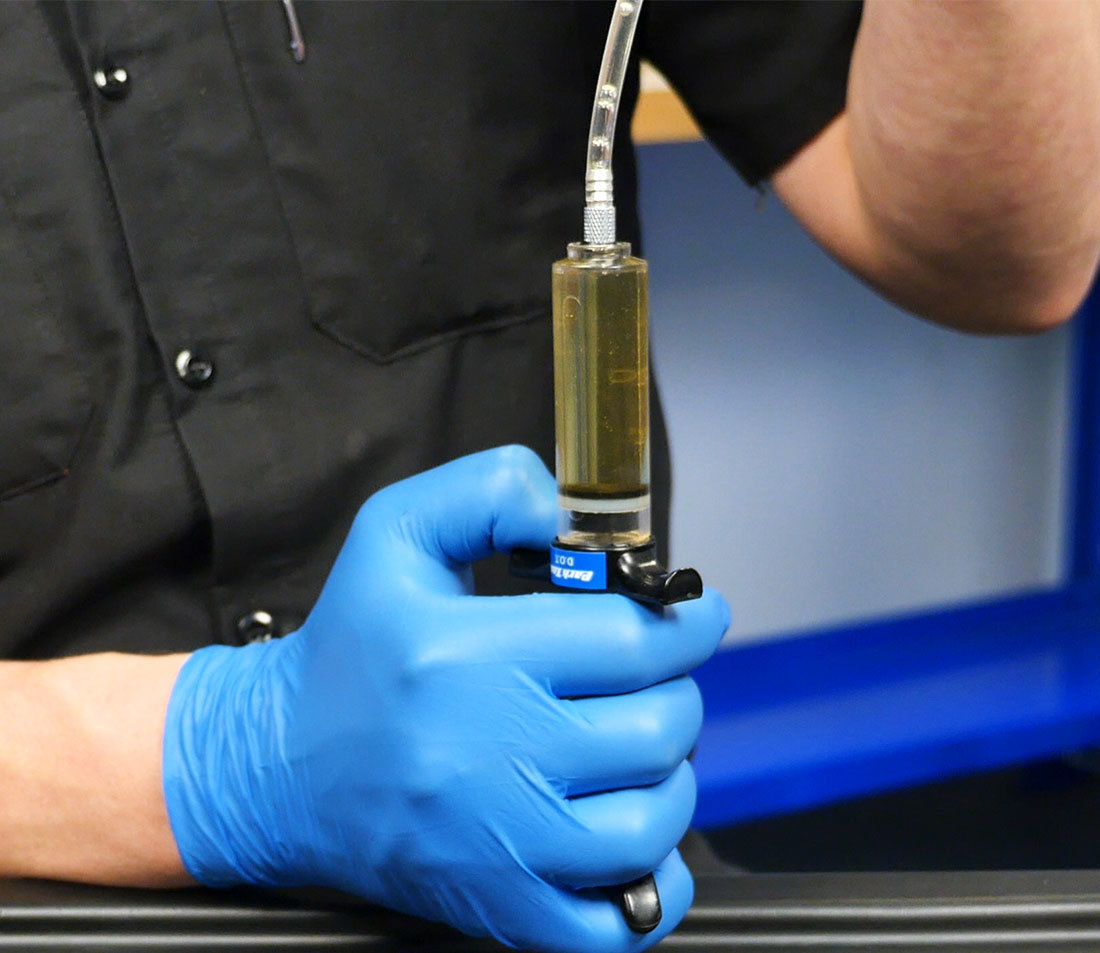
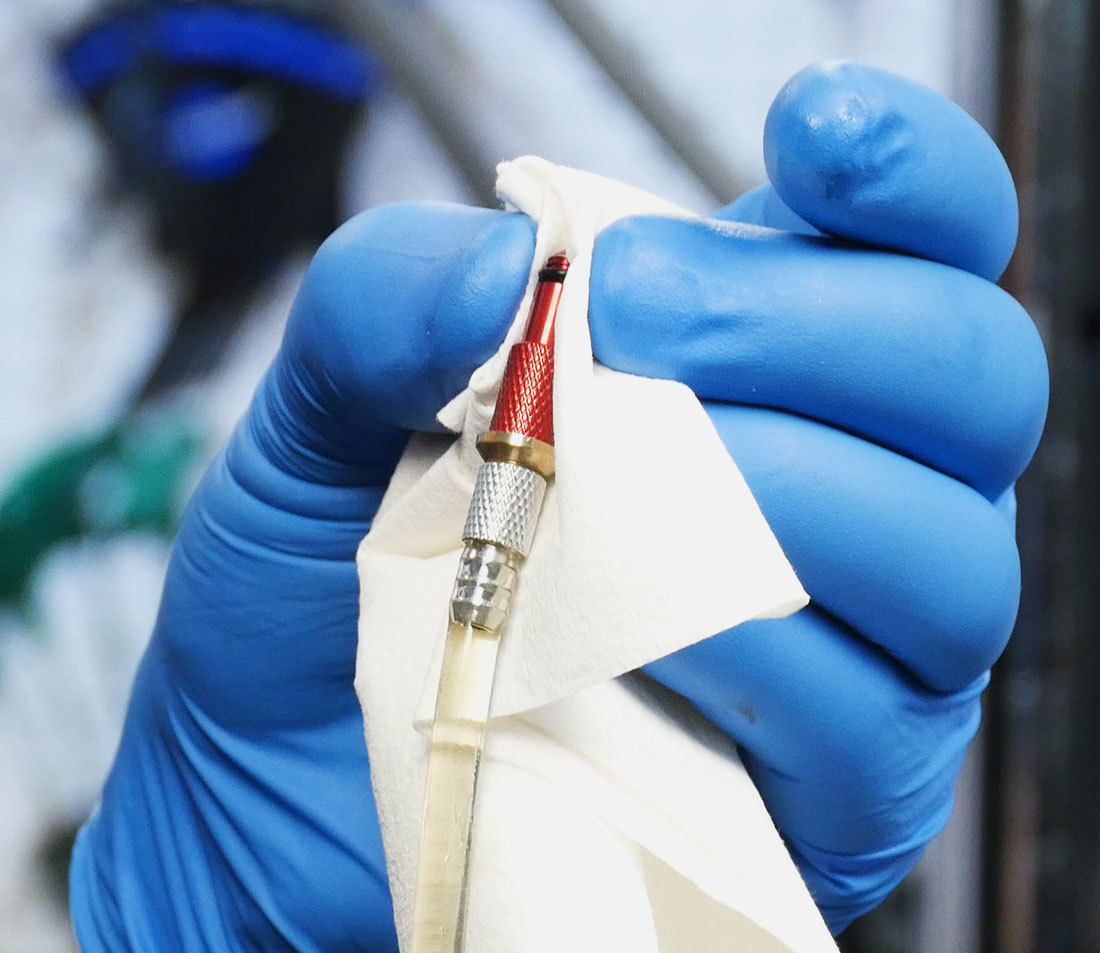
- Fill the second syringe 3/4 full. This would be the caliper syringe.
- Repeat the method of eliminating air from the hose and clipping the hose.
- Take away the bleed screw from the lever utilizing a Torx®-compatible T10 wrench. There’s an o-ring on this screw – make certain it additionally comes out.
- Set up the 1/4 full syringe into the lever. Make sure the o-ring is seated absolutely and evenly within the seize of the bleed port as you thread within the adapter. Clear up any spilled fluid immediately.
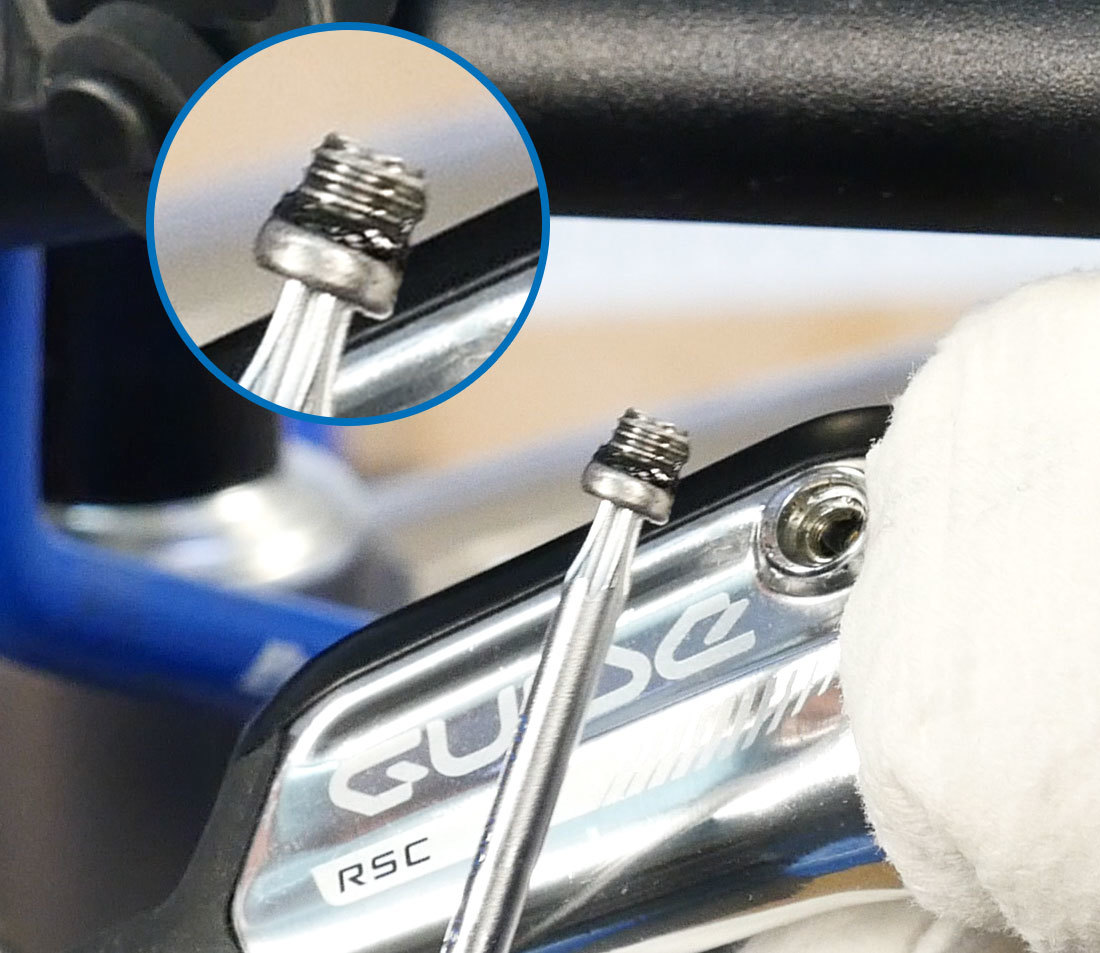
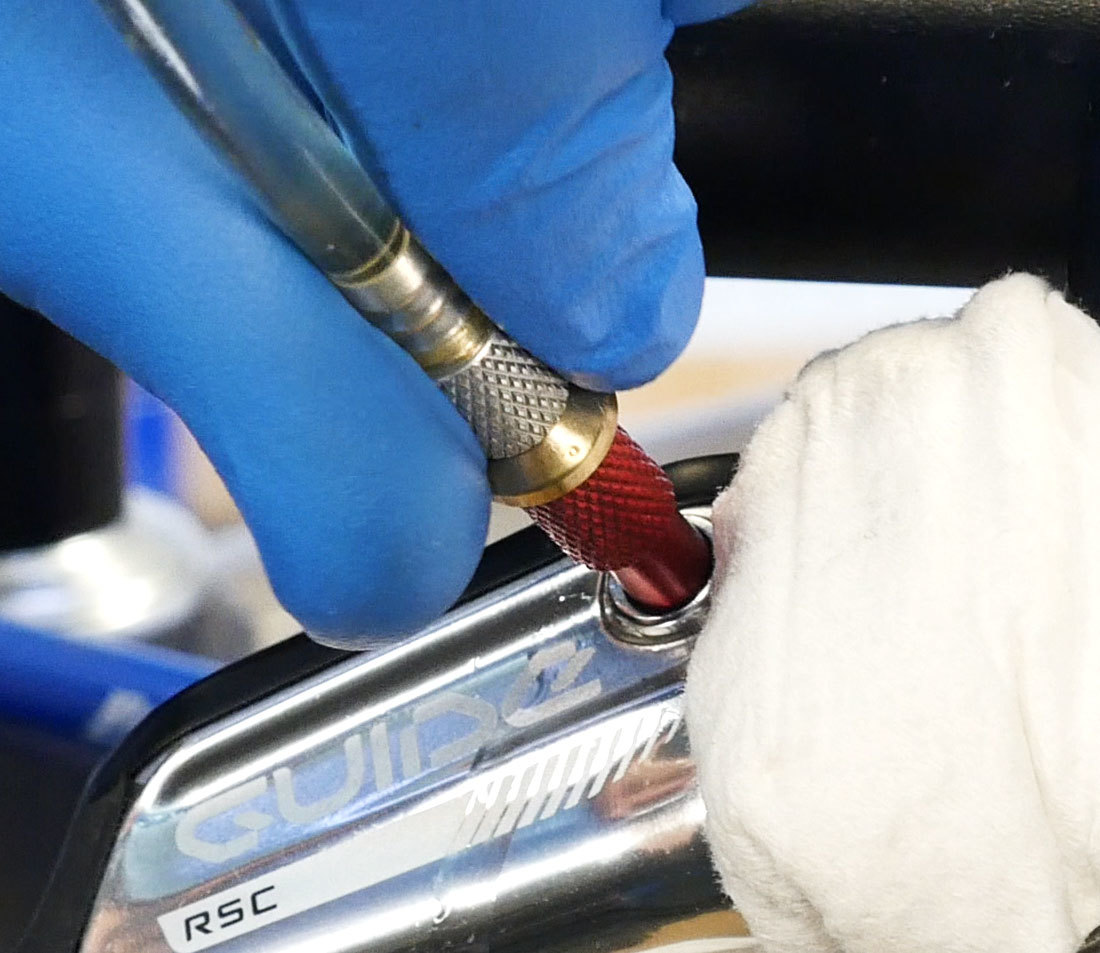
- Set up the syringe within the holder.
- Take away the caliper bleed screw and set up the three/4 full caliper syringe into the bleed port.
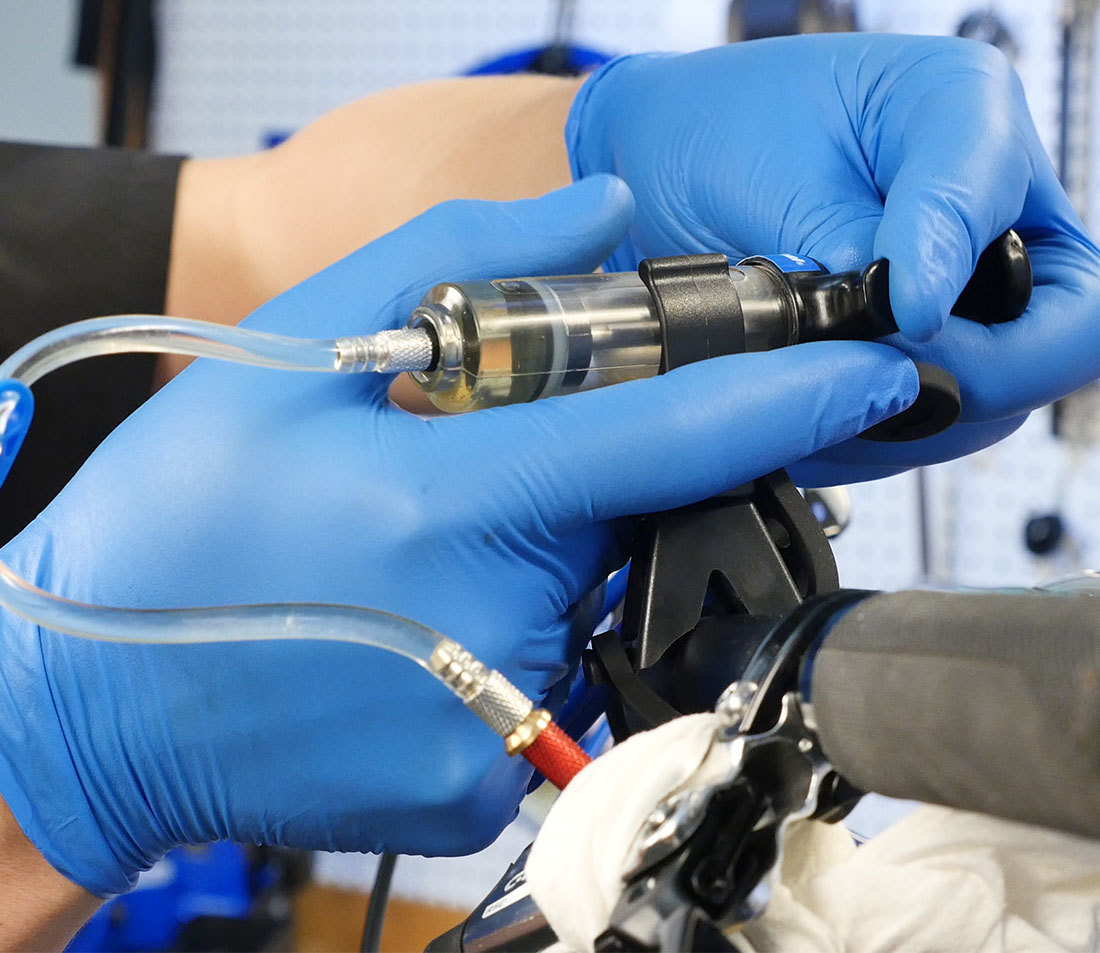
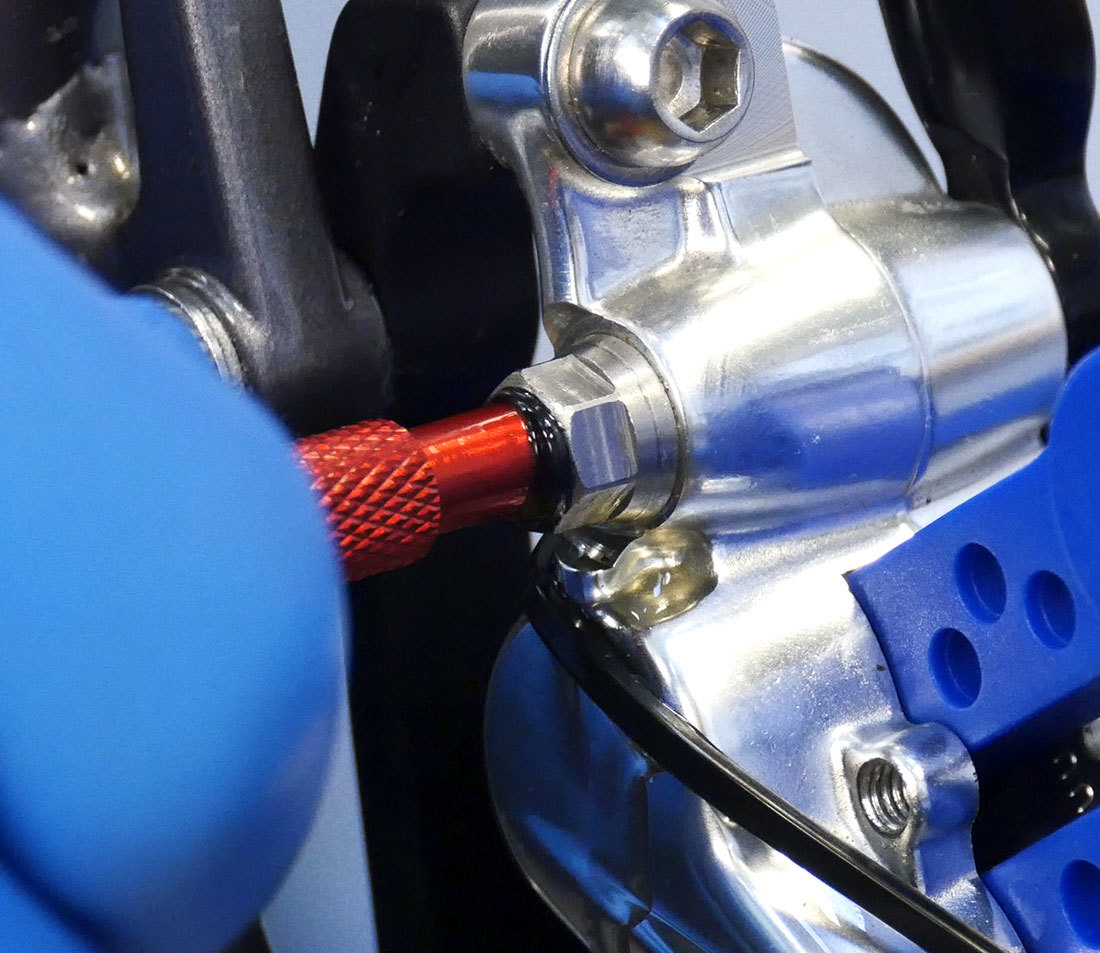
4
BLEEDING
- Unclip each syringes.
- Maintain the caliper syringe tip down and push contemporary fluid into the system. As you push fluid into the system it would push extra fluid into the lever syringe.
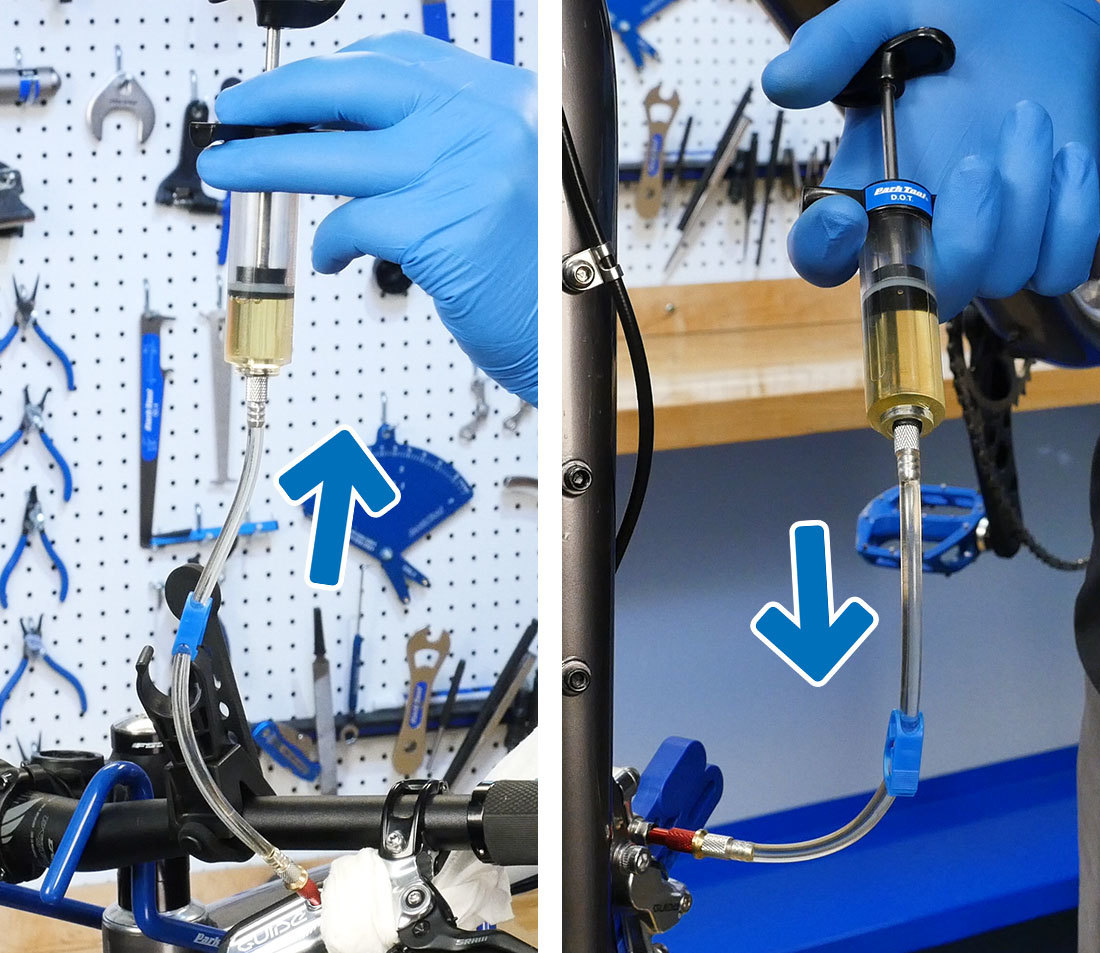
NOTE: If the fluid popping out is soiled or discolored, push all fluid to the lever syringe, take away the syringes, refill and begin the bleeding course of over. This may be sure that you brake system has clear contemporary fluid.
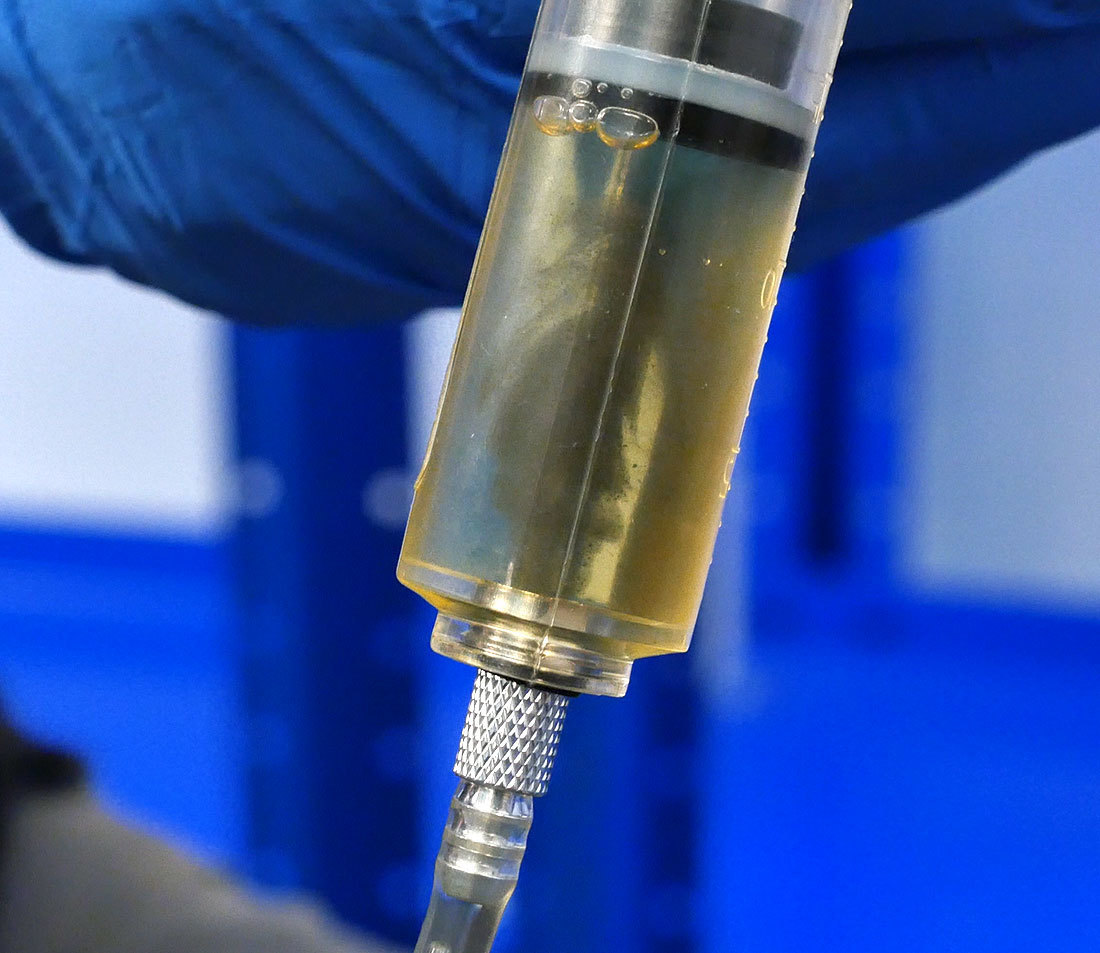
- As soon as the lever syringe is 3/4 full and the caliper syringe is about 1/4 full, shut the clip on the lever syringe.
- Pull the brake lever and maintain it down with a toe strap, rubber band, or different appropriate choice.
- Push, then pull, on the caliper syringe to create a vacuum.
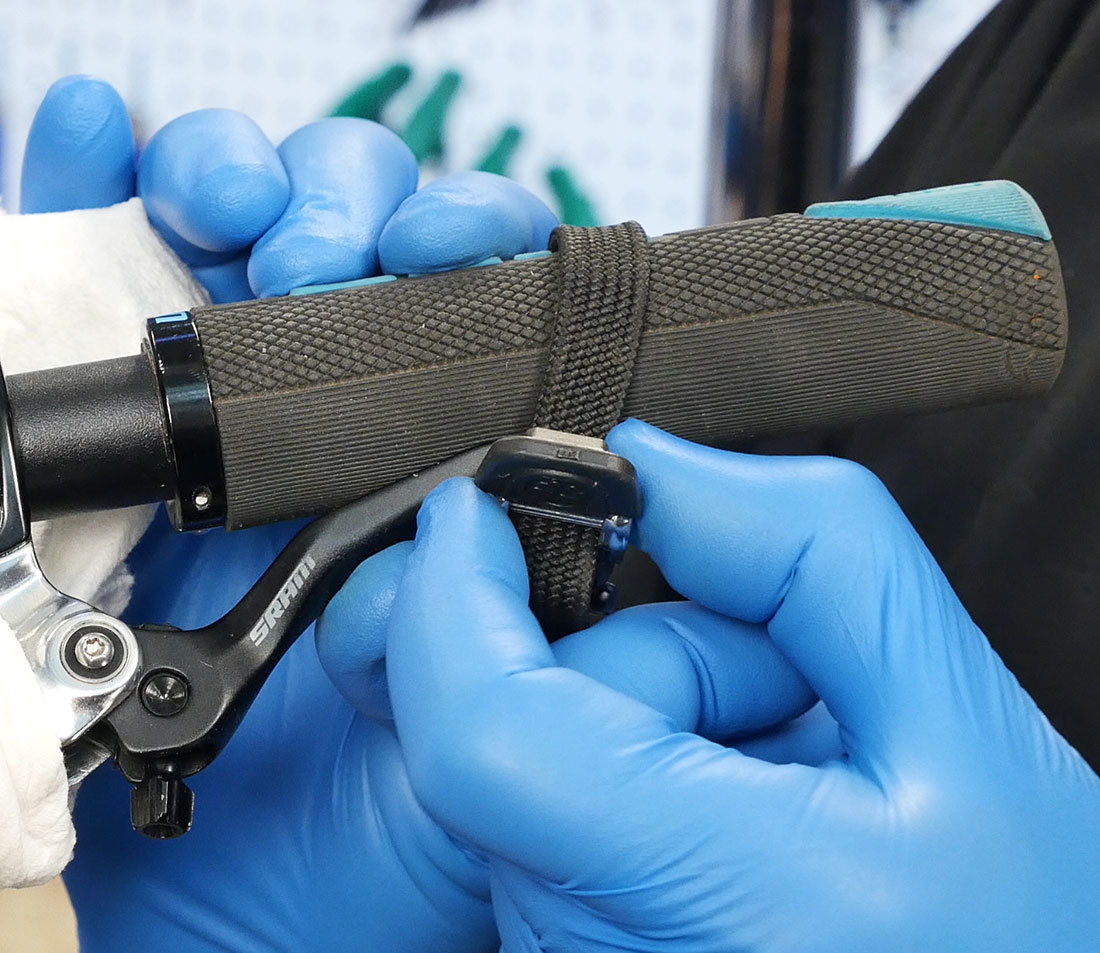
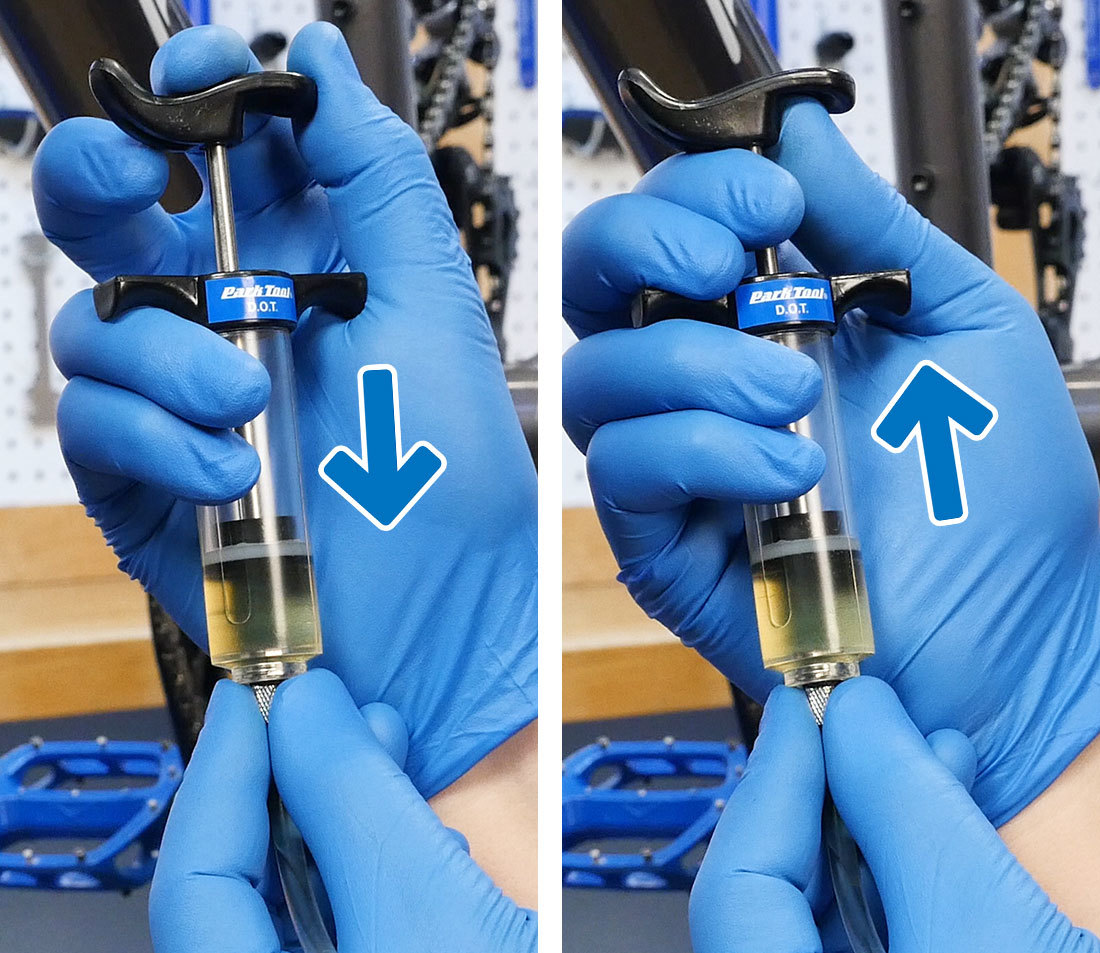
As soon as the vacuum is created you may even see a number of bubbles working their approach out of the caliper.
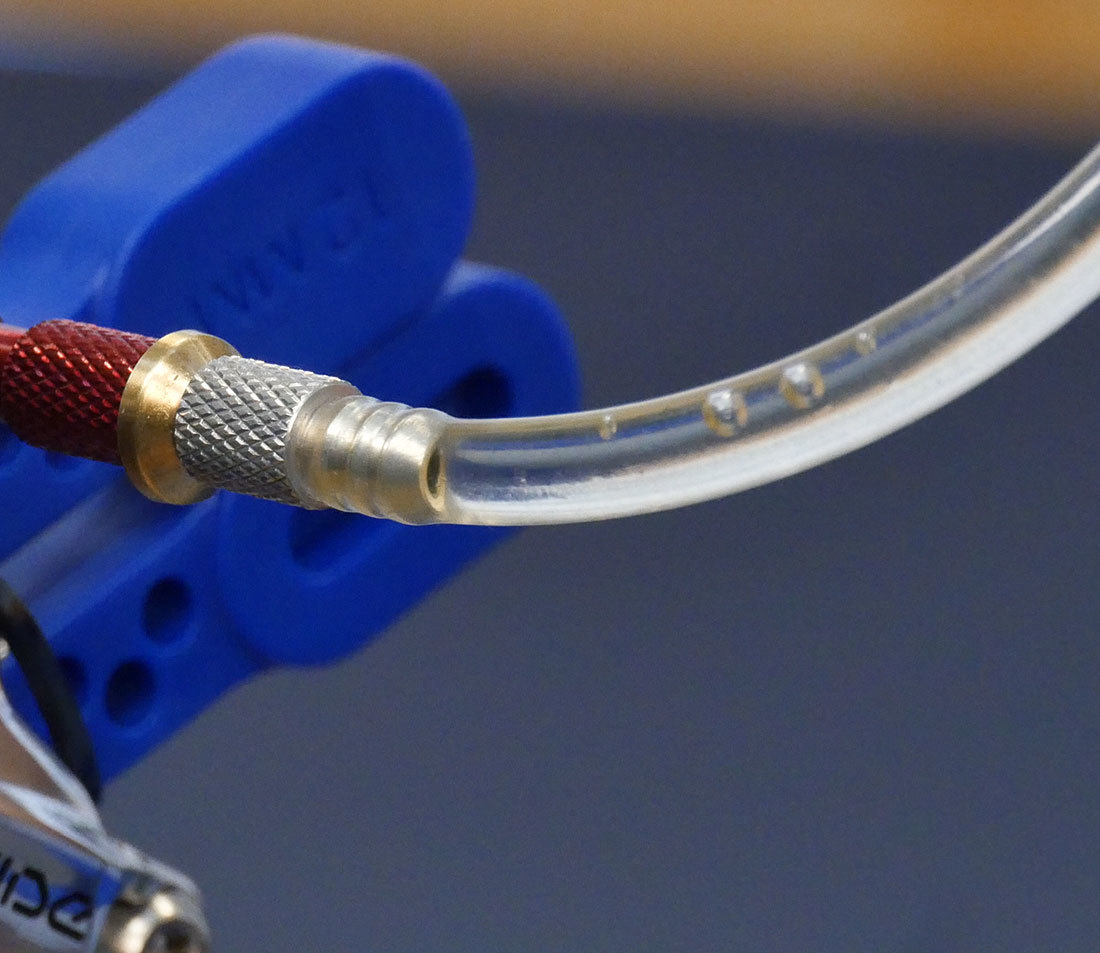
- Proceed the back-and-forth of pushing on the syringe to create strain, then pulling on the syringe to create a vacuum once more, till no extra bubbles come from the caliper.
- Undo the toe strap or different holder whereas holding the lever. Then slowly launch the lever whereas pushing on the caliper syringe.
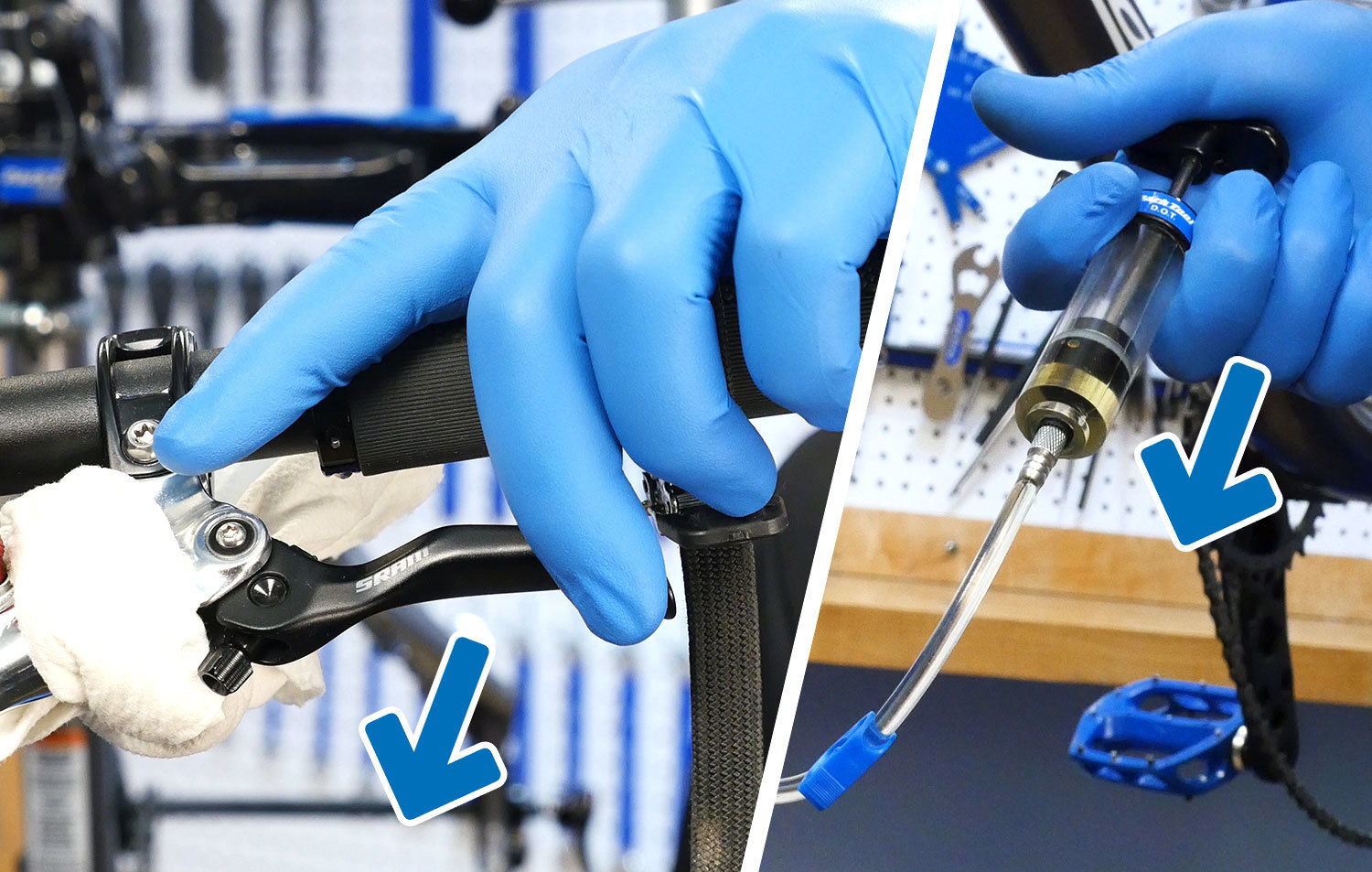
- Clip the caliper syringe hose, and take away the caliper syringe.
- Shortly reinstall the bleed port screw and clear up any spilled liquid.
- On the lever, unclip the syringe clip to permit fluid motion. Pull on the syringe to create a vacuum, drawing air out of the system. Then pressurize by pushing on the syringe.
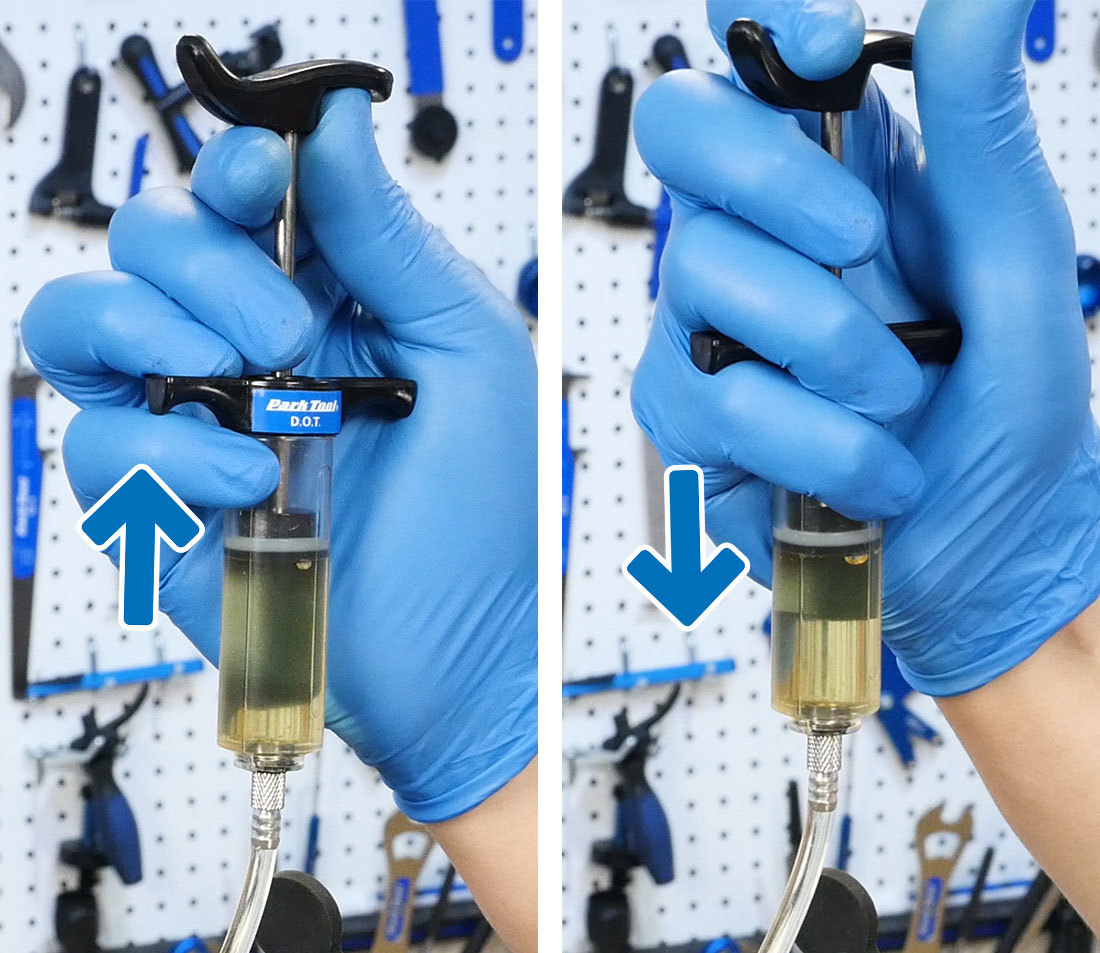
- Let the syringe equalize after which pull and launch the brake lever 10 occasions. Repeat these steps till there are not any extra bubbles.
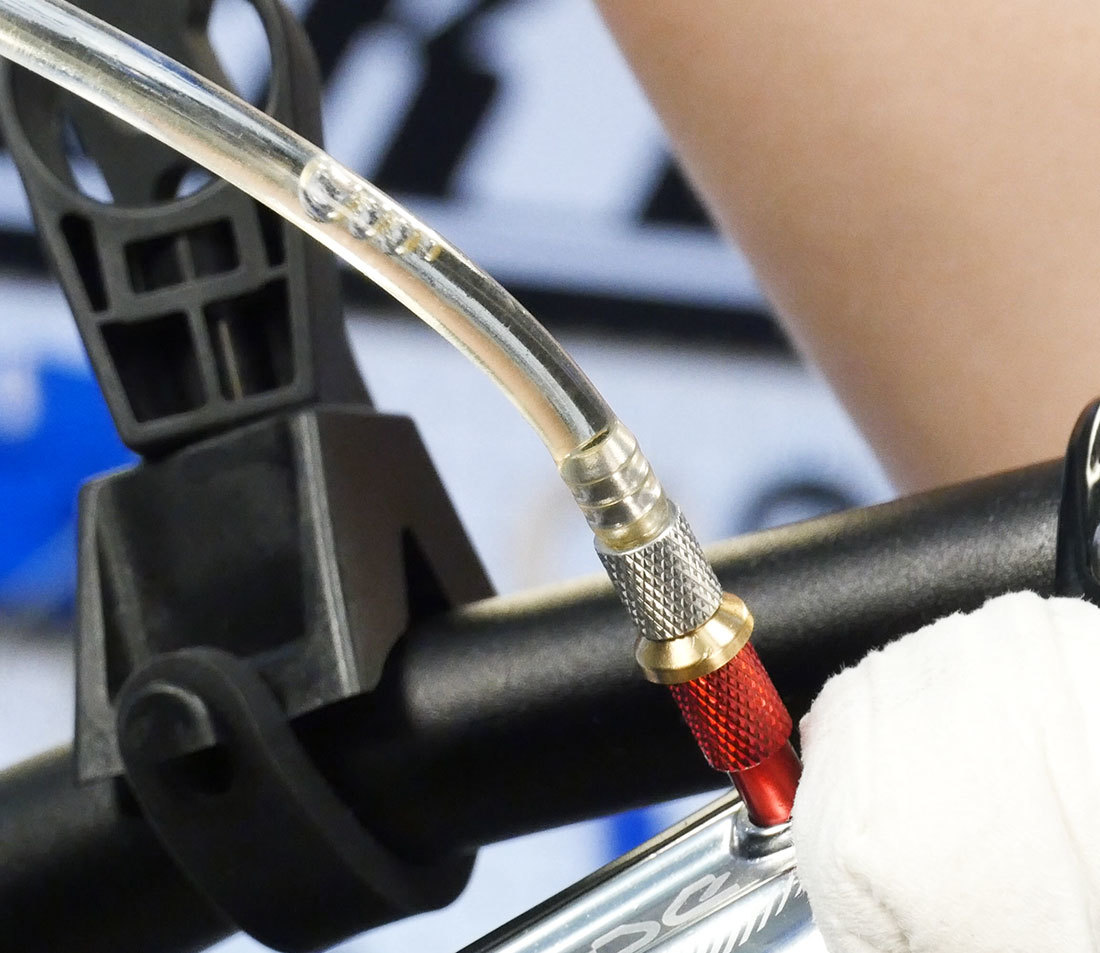
- Push on the syringe, launch the syringe to equalize, and you’re able to clip the hose, take away the syringe and substitute the bleed port screw.
5
RESET BICYCLE
- Take away the bleed blocks.
- Clear the caliper physique, lever, and surrounding areas with alcohol and rags.
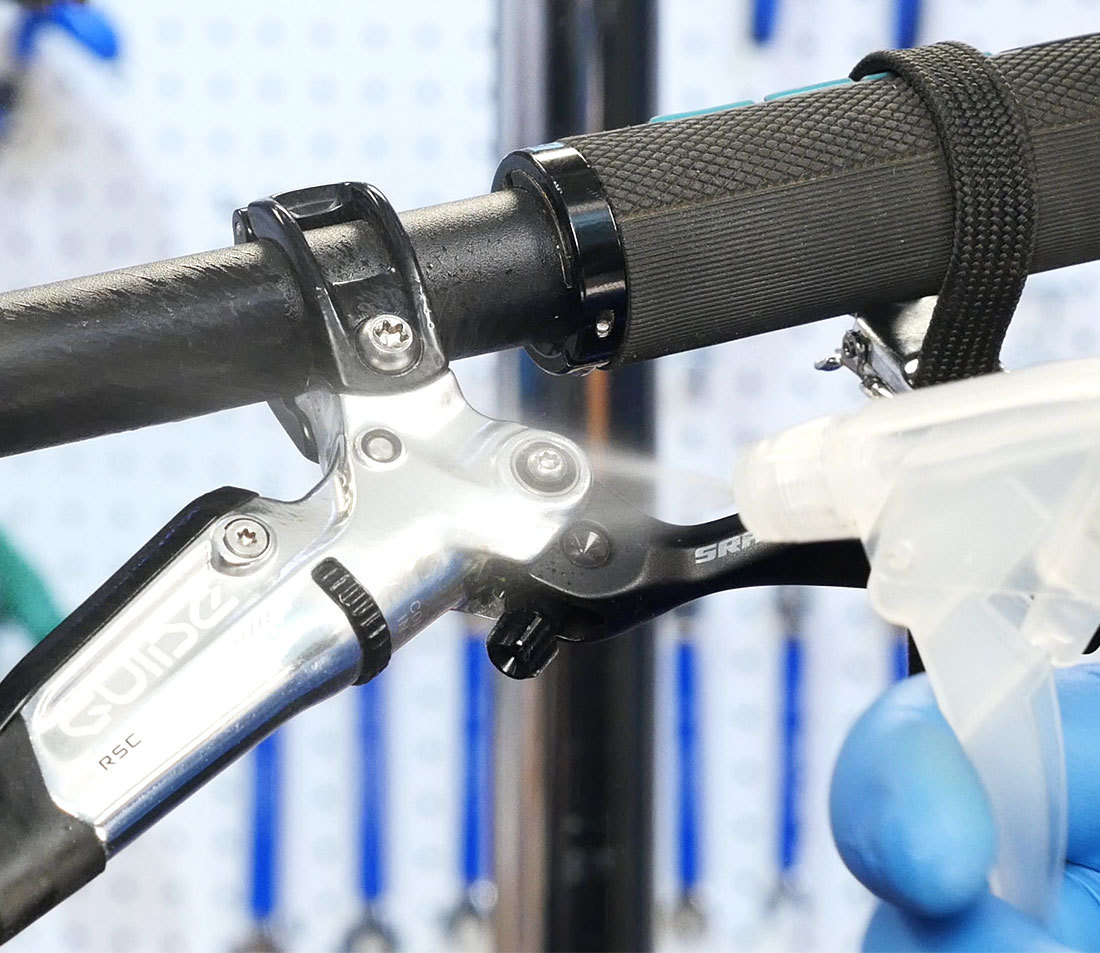
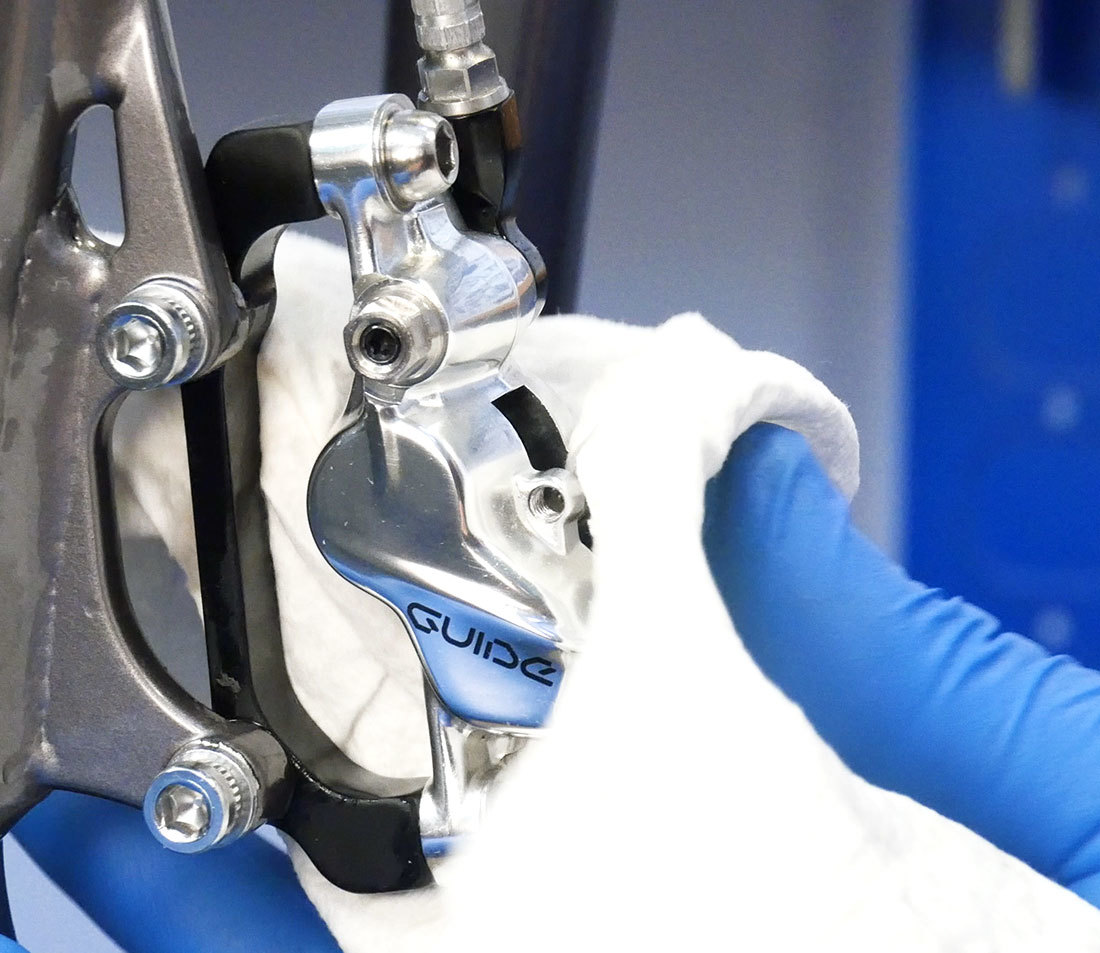
- Reinstall the pads, pad pin and clip.
- When you eliminated the caliper, reinstall it.
- Reinstall the wheel.
- Reset the lever attain again to the specified setting and pull the brake lever 3 occasions. This may self regulate the system to the pad life that’s left.
NOTE: When you encounter rubbing, you could have to realign your calipers presently.6
CLEAN KIT
- After bleeding, clear the syringes and hoses of all fluid.
- To lengthen the lifetime of your bleed equipment, it’s advisable to wash the entire system with alcohol. Begin by operating alcohol via the hoses.
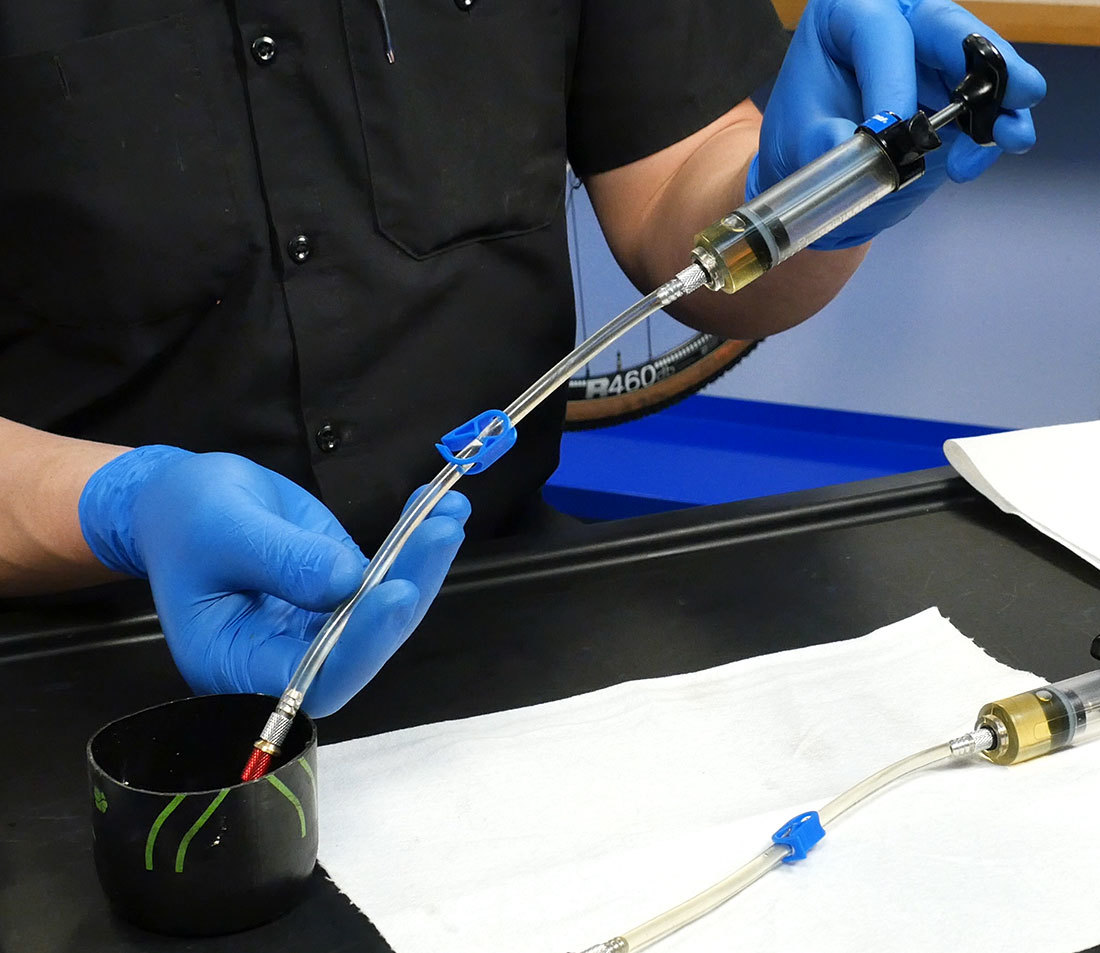
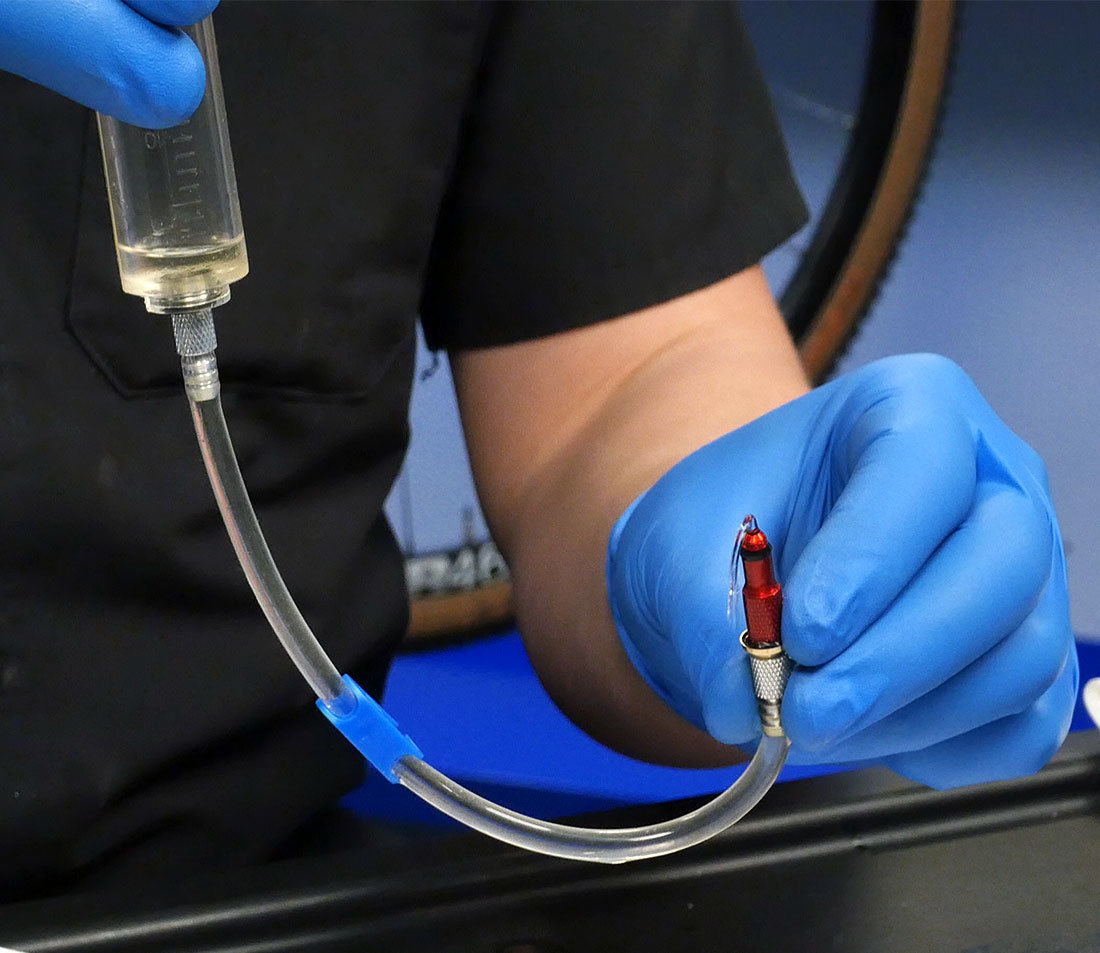
- Disassemble the equipment and wipe down each bit, particularly the elements that got here into contact with DOT fluid.
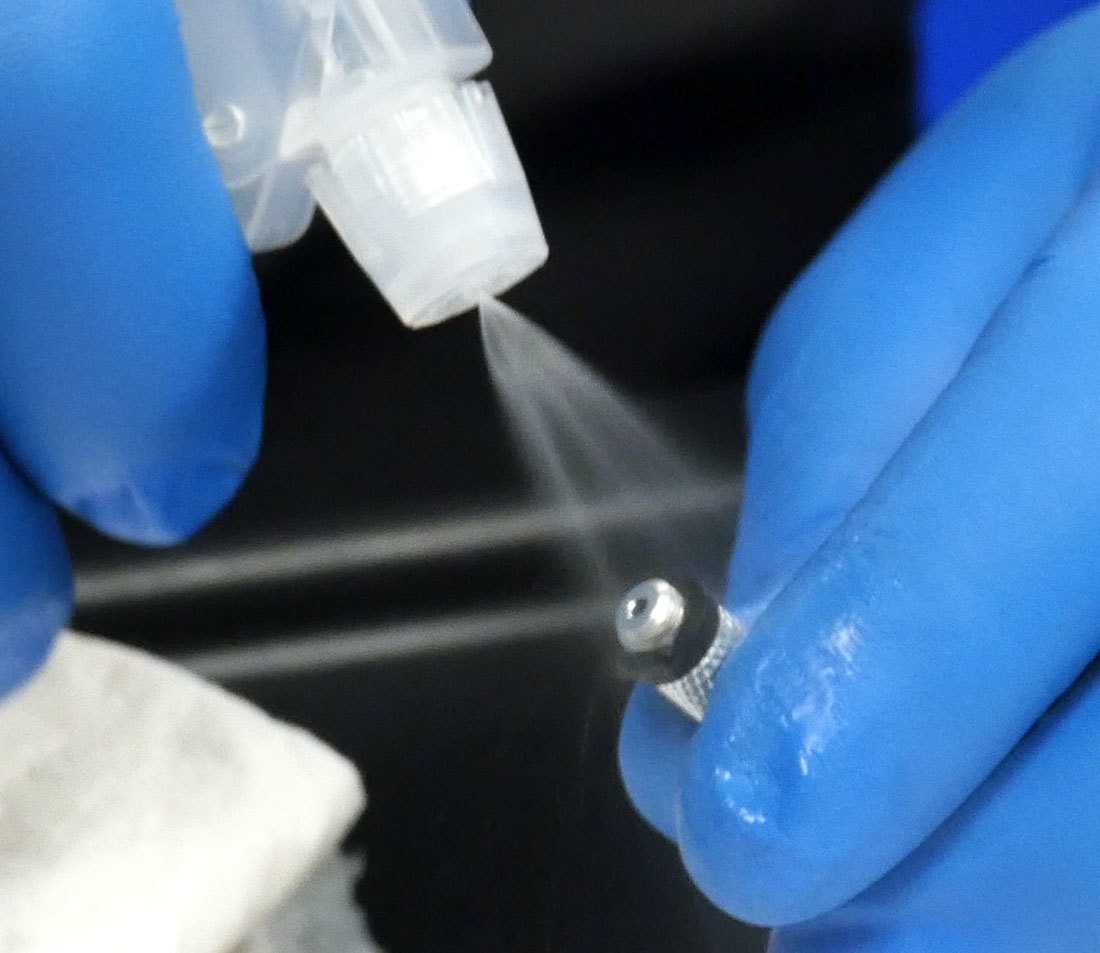
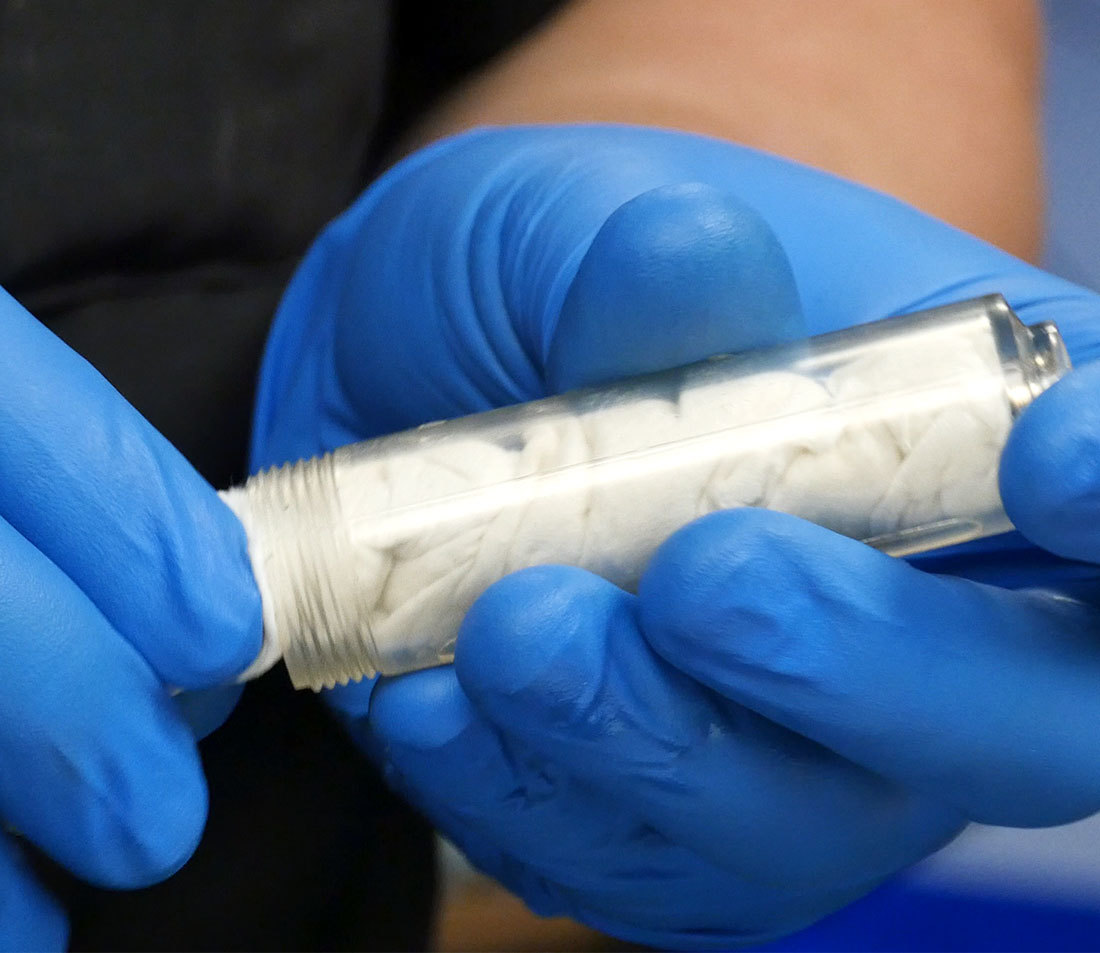
- Depart the equipment out to dry.
- Eliminate fluid in accordance with native rules (see assets for: US, UK)


